The Neapolitan Riviera is a long time favorite place for recreation of bohemians of all stripes. However, and "mere mortals" here you can find a decent and inexpensive option for recreation.
Contents
- Where is the Neapolitan Riviera?
- climate and natural features of the Neapolitan Riviera
- Transport and special hotel
- main resorts
- Amalfi
- Baia Domizia
- Maiori
- Minori
- Praiano
- Positano
- Cetara
- Paestum
- Ravello
- Sorrento - bohemian place
- Salerno and its surroundings
- Naples and its attractions
- Pompeii, Herculaneum and Stabia
- Ischia Island
- Capri Island
- Video. Charm of the Amalfi Coast
- Video. Walking through Naples
- Video. The last day of Pompeii.
Where is the Neapolitan Riviera?
The Neapolitan Riviera is a stretch of the western coast of Italy from Naples to Salerno.
We know about some of the resorts of this marvelous region from school textbooks - exactly here on the island of Capri Maxim Gorky wrote his novel "Mother".
Here I also liked to have a rest VI.Lenin. Fedor Chaliapin corrected his health on the Neapolitan Riviera.
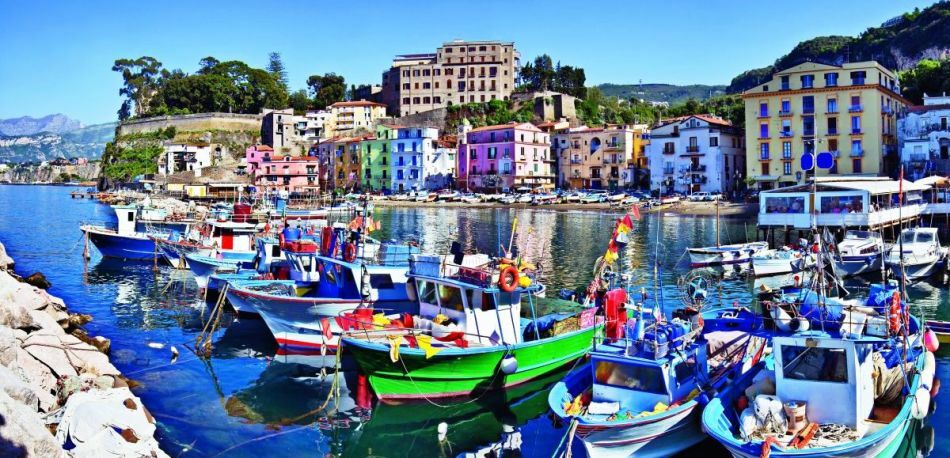 Boat mooring in Sorrento, Neapolitan Riviera, Italy
Boat mooring in Sorrento, Neapolitan Riviera, Italy Sergey Diaghilev and Vaclav Nijinsky created their masterpieces here and went about their duties. Rudolf Nureyev was so inspired by the beauties of the local coast that he even bought himself a small island near Positano.
Alexey Glyzin sang "The Late Evening in Sorrento" in the 90's. In the early 2000s, the Neapolitan Riviera was flooded with new Russians and drove the locals crazy with their binges and the amount of money.
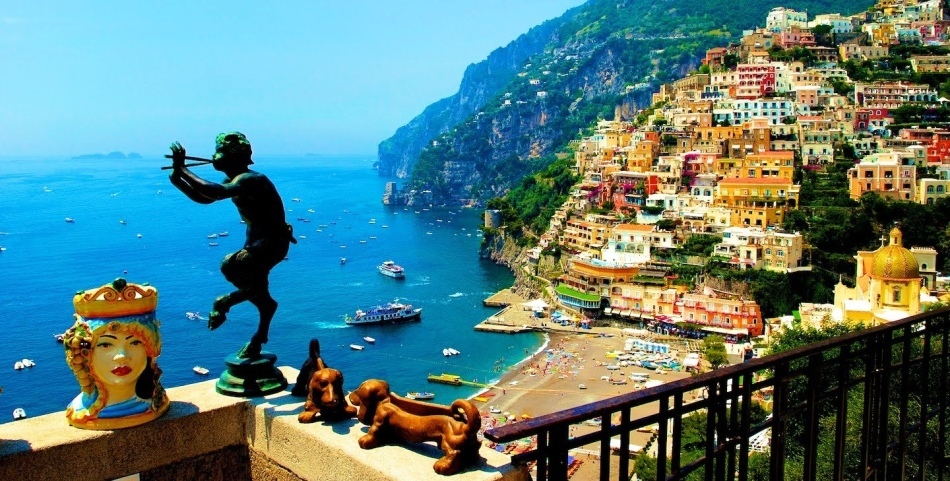 Amalfi Coast, Neapolitan Riviera, Italy
Amalfi Coast, Neapolitan Riviera, Italy Climate and natural features of the Neapolitan Riviera
The Naples Riviera has a typical Mediterranean climate with mild winters and hot summers.
Comfortable for summer holiday, the weather here is set in early May and lasts until the end of October. In July-August, the winds on the Neapolitan Riviera often blow only for this area, so it's better for fans of hot and windless weather to choose between June and September for rest.
 Capri Island, Italy
Capri Island, Italy The beach season on the Neapolitan Riviera begins at the end of May, but the sea in some places can warm up until the end of June.
This is due to the fact that almost the entire coastline of the Neapolitan Riviera is a continuous rock, steeply escaping into the sea.
There are very few beaches with a gentle sandy bottom, and they are located in small bays. Basically, it is necessary to dive and swim from stony platforms.
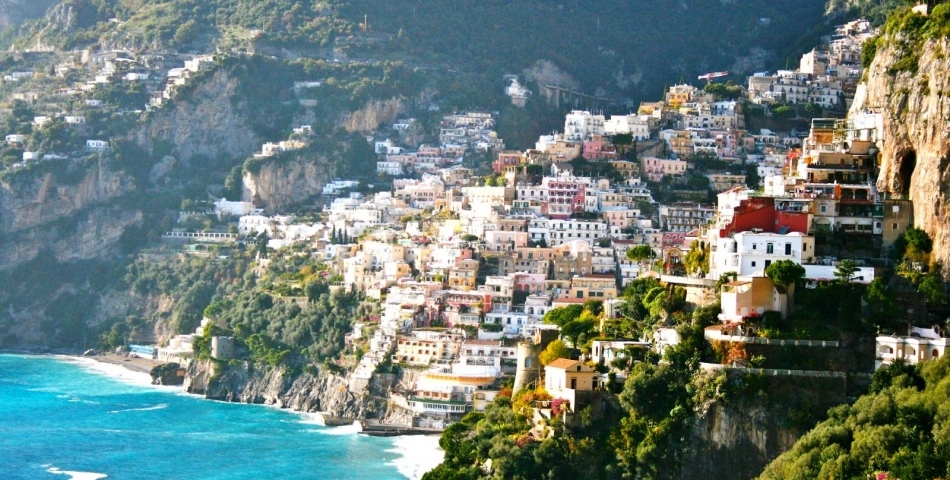 The coast of the Neapolitan Riviera, Italy
The coast of the Neapolitan Riviera, Italy Thanks to the rocky shores, the landscapes of the Neapolitan Riviera are simply mesmerizing: terraces descend to the sea gardens, picturesque cities on the slopes of the mountains, miraculously clinging to the rocks of hotels where you can go down to the sea only on an elevator.
And, of course, the purest sea, in which the bottom is seen to the smallest detail for many, many meters in depth.
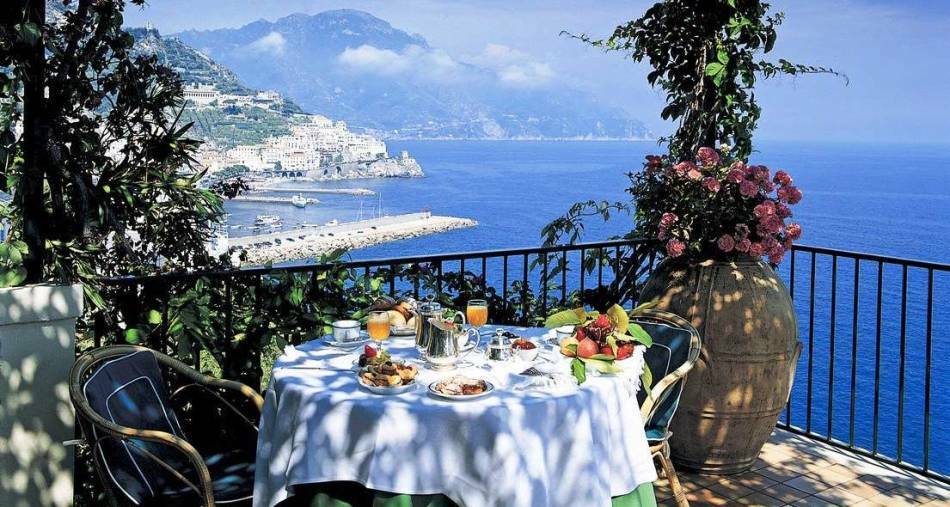 Views of the Neapolitan Riviera, Italy
Views of the Neapolitan Riviera, Italy Transport and features of the
The easiest way to reach any city in the Neapolitan Riviera is from Naples - from here to the entire coast, an extensive network of local bus routes leaves.
Prior to Naples from Rome several times a day there is a express train from Termini Station. Also, Naples with other countries connects flights( mainly from Europe).
By the way, if you arrived at the airport in Naples and plan to immediately go to the coast, you can find the right route directly from the airport.
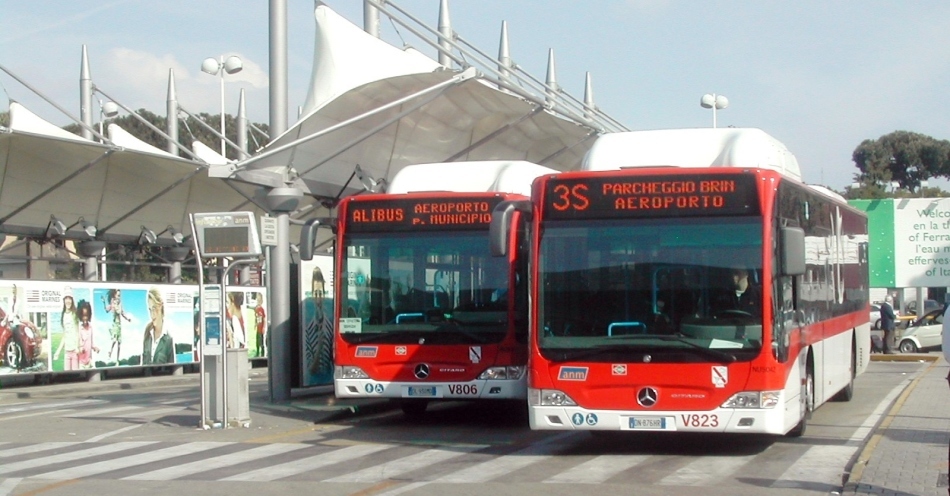 Buses at the airport in Naples, Italy
Buses at the airport in Naples, Italy View the schedule of bus routes from Naples Airport here. See bus routes, ticket prices and timetables around the coast of the Neapolitan Riviera here.
If you are going to the very south of the Neapolitan Riviera, it is easier to get on a train from Naples or Rome to Salerno, and then take the bus to the Amalfi Coast.
Between the resort towns of the Neapolitan Riviera regularly run passenger boats, the cost should be clarified on the spot.
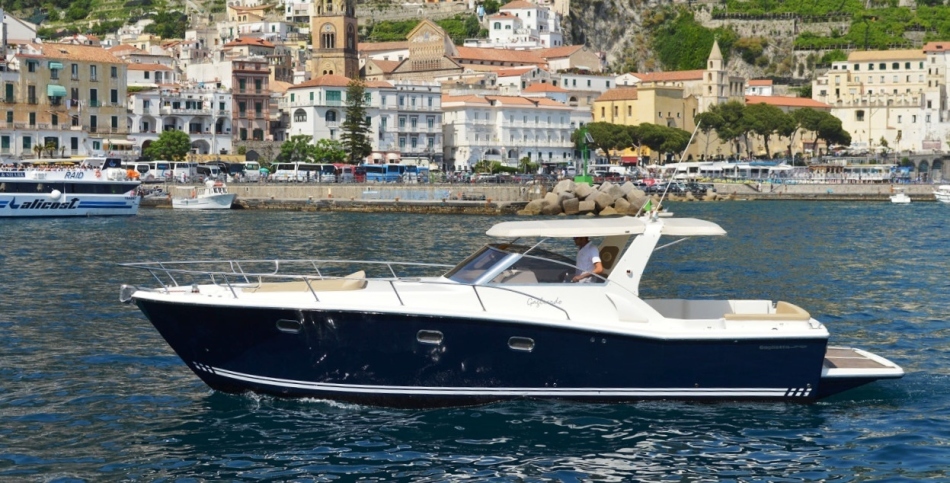 Passenger boat, Neapolitan Riviera, Italy
Passenger boat, Neapolitan Riviera, Italy Basically, accommodation options in the Neapolitan Riviera are either cheap hotels with a fairly high level of service, or small private hotels in which the owner serves a couple of families, working simultaneously as a maid, and cook, andgardener.
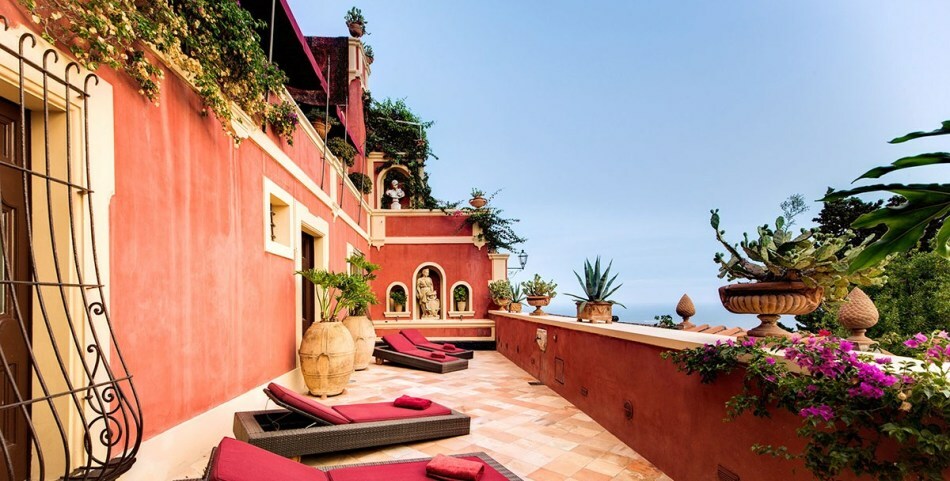 Villa in Positano, Neapolitan Riviera, Italy
Villa in Positano, Neapolitan Riviera, Italy If you consider the options for renting, then mostly private villas with excellent furnishings and location, but you can find inexpensive options - mostly closer to Salerno.
In Maiori and Minori there are modern apartment buildings where you can rent apartments. The main thing is to take care of the trip in advance, as the demand for local villas, hotels and apartments starts for six months, and even earlier. And, of course, the most profitable options "go" in the first place.
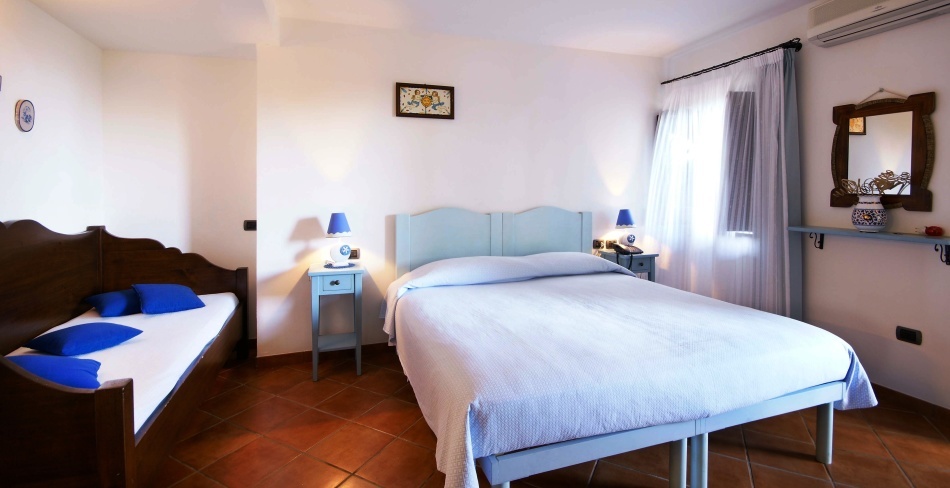 Apartment in Maiori, Amalfi, Italy
Apartment in Maiori, Amalfi, Italy The most popular resource for finding accommodation for rent is airbnb.ru( an international resource with a Russian-language version).The site can be contacted directly with the owner of the housing, ask all the questions of interest, see the description of services, photo and map of the surrounding area.
Settlements with homeowners are made through the site, which minimizes the likelihood of fraud. There is a 24-hour support line.
The reservation form for this resource is accepted by all consular services of Schengen as a booking confirmation( instead of a hotel voucher).
 Airbnb.ru - search for accommodation in Italy
Airbnb.ru - search for accommodation in Italy Hotels can also be booked independently on the sites of booking.com, Trivago, hotels.com, Oktogo and others.
The main resorts of
Amalfi
It's hard to believe that once this tiny town, nestled between two rocks, was a major trading port with a population of more than 70 thousand people.
In Amalfi you will not see a large number of historic quarters and buildings, because in the XIV century most of the metropolis simply went under water during the next earthquake.
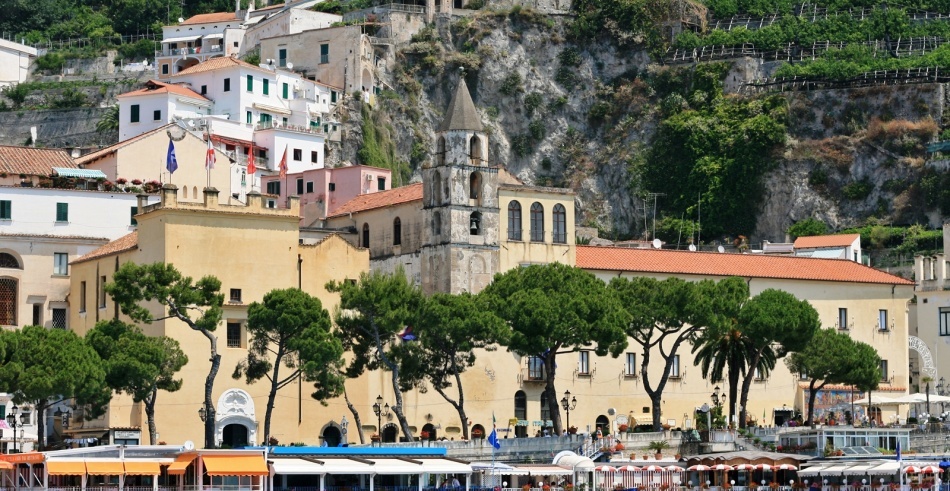 Amalfi, Neapolitan Riviera, Italy
Amalfi, Neapolitan Riviera, Italy On the former importance of the city, at least the fact that the maritime law of the Amalfi Republic extended for a long time to all of Italy, and the beauty and wealth of the city was a serious competitor to Genoa and Pisa.
In the local cathedral of St. Andrew, as the inhabitants assure, the relics of Andrew the First-Called are kept, in the middle in Amalfi even the residence of the archbishop was located.
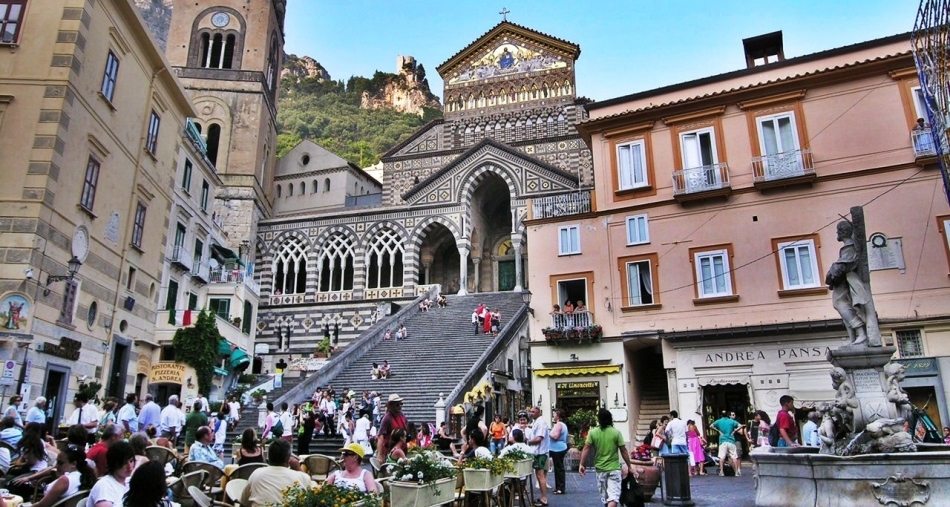 Church of St. Andrew, Amalfi, Italy
Church of St. Andrew, Amalfi, Italy Actually, the entire coast of the Neapolitan Riviera from Sorrento to Salerno is called Amalfi.
Today the city can be bypassed from one end to the other in only half an hour, but this does not detract from its beauty and charm.
First, several historical buildings are still preserved here, and they will make a worthy competition to other museums and mansions.
Secondly, Amalfi - it's not so much architecture, as amazing nature, leisurely daily rhythm of life of local residents, incendiary parties at night and, of course, excellent cuisine.
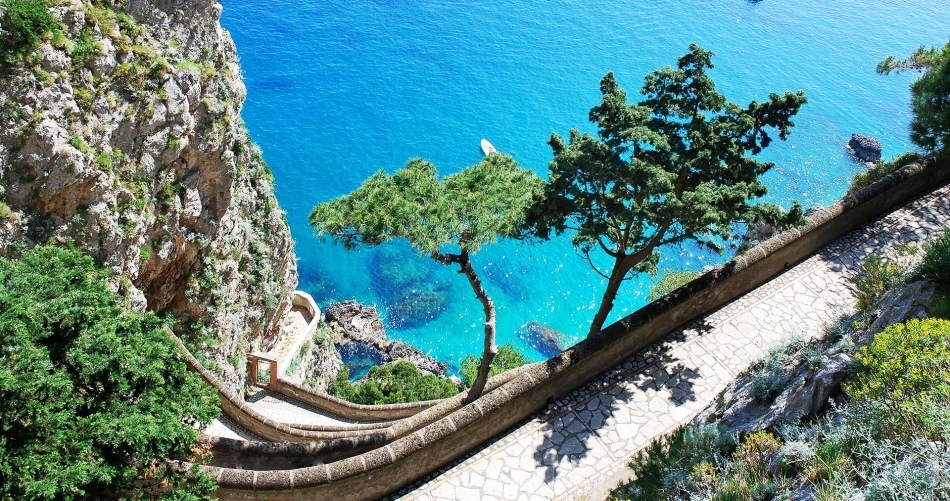 Amalfi, Neapolitan Riviera, Italy
Amalfi, Neapolitan Riviera, Italy The city is perched on an almost vertical cliff, the streets are steep tiers, and the roofs of the lower tier serve as gardens for the upper tier - an absolutely stunning spectacle.
In Amalfi there is a fairly large by the local standards sandy beach, many cafes and restaurants, there are nightclubs and entertainment facilities.
 Amalfi, Neapolitan Riviera, Italy
Amalfi, Neapolitan Riviera, Italy In the vicinity of Amalfi is the famous Emerald Grotto, where the reflection of water and stone paint the surrounding walls with unreal pictures of sunny bunnies, glare and shadows. For fans of underwater adventures in Amalfi there are several schools of diving with a full range of services.
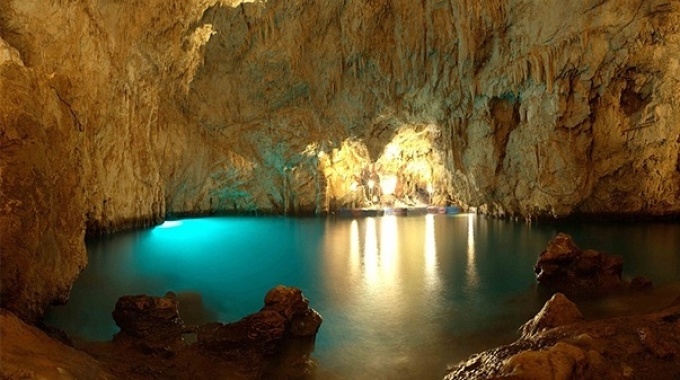 Emerald grotto in the vicinity of Amalfi, Italy
Emerald grotto in the vicinity of Amalfi, Italy Bahia Domitia
Bahia Domitia is a resort that, strangely enough, is most popular with Italians themselves. Compared with other cities of the coast, it is in the Baye Domitia that you will find the least number of foreigners among holidaymakers.
This popularity is due to the fact that, firstly, the rest here is relatively inexpensive( and Italians are very fond of saving), and secondly, Bahia Domitia is relatively close to Rome, where most of the tourists go from, compared to other resorts of the Neapolitan Riviera.
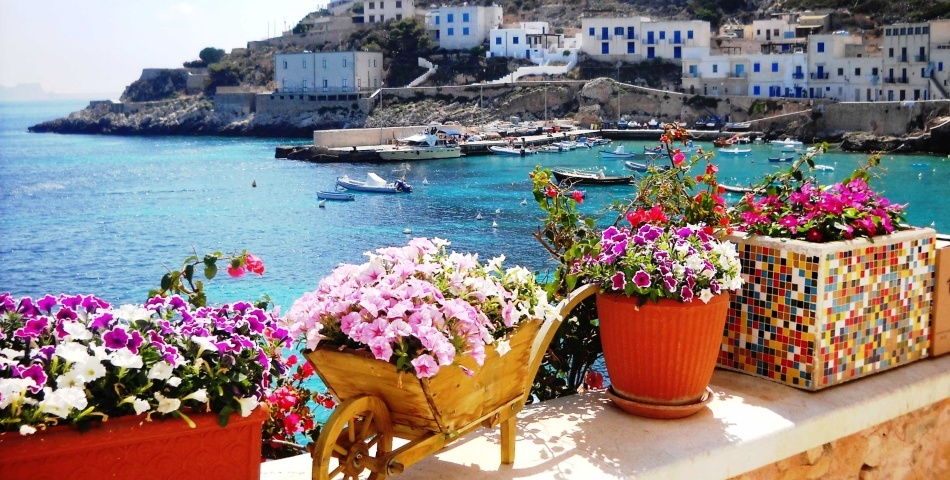 Bahia Domitia, Neapolitan Riviera, Italy
Bahia Domitia, Neapolitan Riviera, Italy The city is quite tiny, but since it is possible to get to the neighboring cities by bike, rest here will not be boring and secluded.
Bahia Domitia is one of the few towns that boasts a magnificent sandy beach with a gently sloping sea entrance.
In addition, the city is located in a pine grove, stretched along the shore. For these reasons, most vacationers here are families with children.
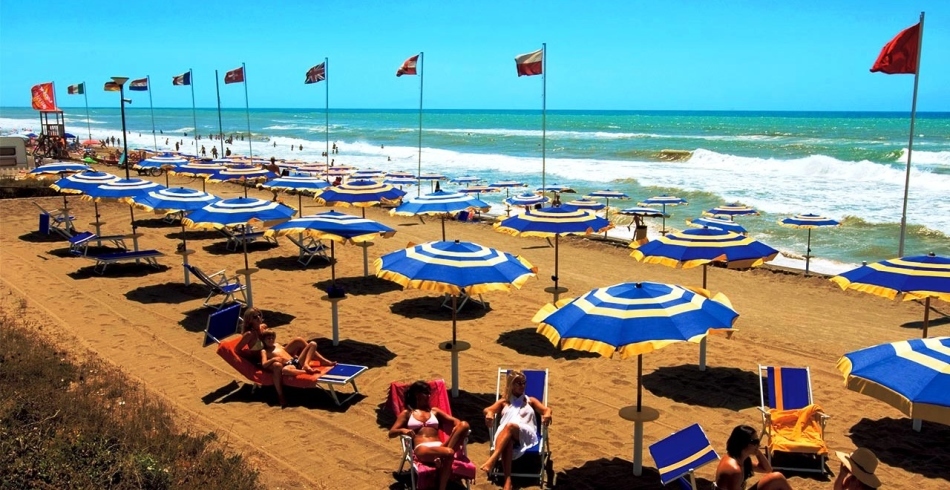 Beaches of Baia Domitia, Neapolitan Riviera, Italy
Beaches of Baia Domitia, Neapolitan Riviera, Italy Under the family rest the whole infrastructure is "sharpened". Bayi Domitsii: animation in hotels, infrastructure on the beaches, all kinds of entertainment and excursions for the whole family.
However, Russian-speaking animators and guides are not likely to be found here, because there are very few tourists from Russia yet.
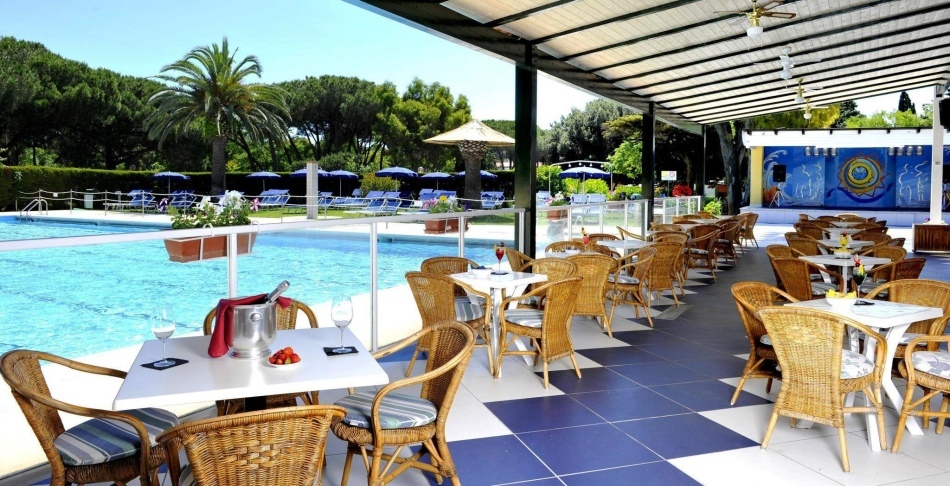 Hotel La Serra Holiday Village in Baia Domizia, Neapolitan Riviera, Italy
Hotel La Serra Holiday Village in Baia Domizia, Neapolitan Riviera, Italy Maiori
Maiori is another small town in the Neapolitan Riviera, which is permeated with sun, salty breeze and the smell of flowers. In the Middle Ages it was called the royal city for its beauty and profitable trade position.
Here is a huge selection of hotels and apartments. Unlike the pathos of Sorrento and Capri in Majori, you can find very affordable prices for accommodation, as well as inexpensive cafes and restaurants.
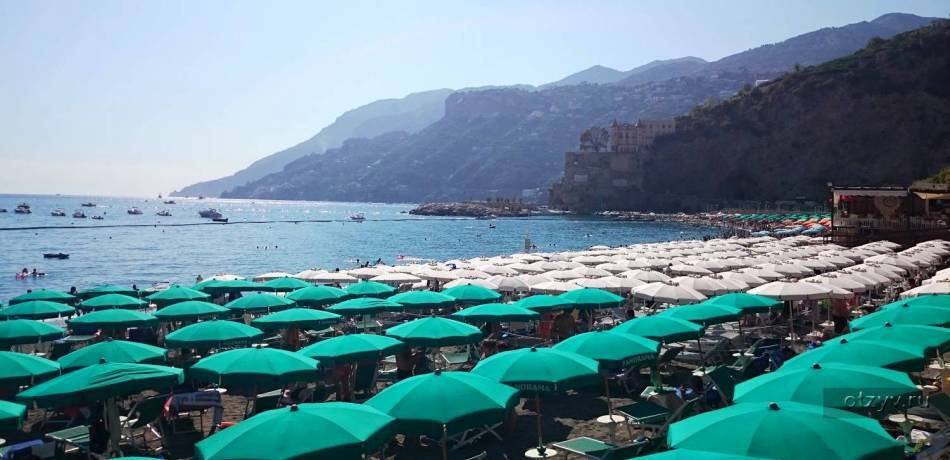 Beach in Maiori, Neapolitan Riviera, Italy
Beach in Maiori, Neapolitan Riviera, Italy In Maiori, a magnificent sandy beach, quite large by local standards. For fans of excursions in the city and its surroundings, there are several ancient and very picturesque monasteries and cathedrals.
Throughout the year, festivals, city holidays, concerts and colorful processions are held in Maiori every now and then. The brightest festival here takes place in late February-early March.
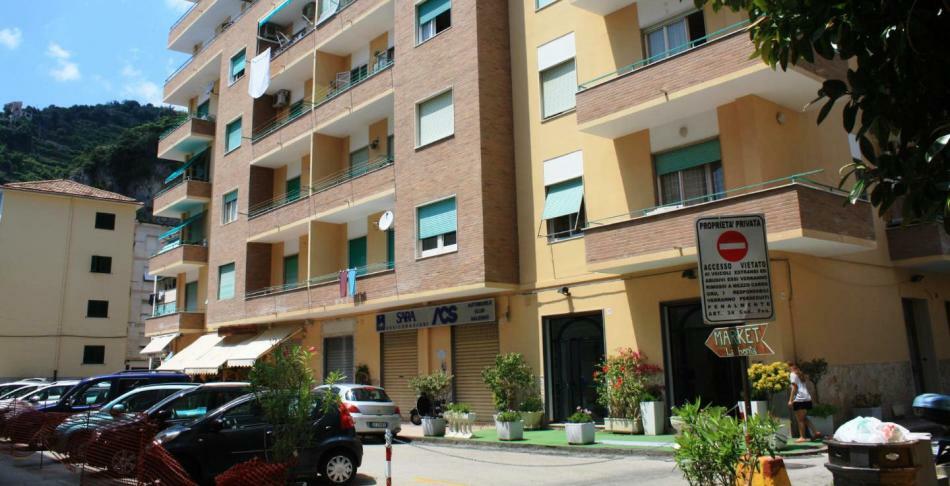 Apartments in Maiori, Neapolitan Riviera, Italy
Apartments in Maiori, Neapolitan Riviera, Italy Minori
Minori is located just a few kilometers from Majori. They are so similar that often these two resorts are called one word "Maiori-Minori".
The main distinguishing feature of Minori is the huge amount of citrus orchards( oranges and lemons here bloom all year round and grow to incredible sizes with the baby's head), as well as a beautiful and long promenade along the sandy beach.
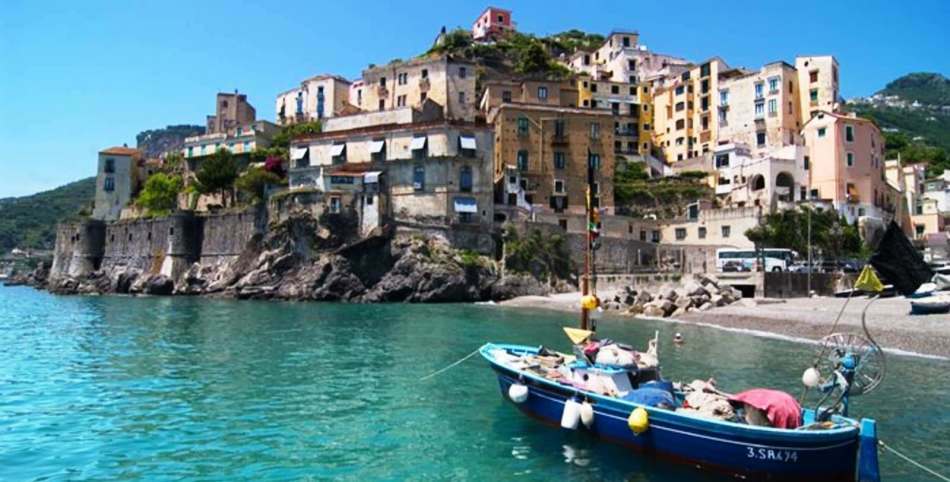 Minori, Neapolitan Riviera, Italy
Minori, Neapolitan Riviera, Italy Even in Minori strikes the number of dog breeders - it seems there is not a single family here that does not keep a pet, or even a few, in the house. In the evening on the embankment a real parade of dogs begins, which the hosts take out for a walk.
Despite this dominance of four-legged, the streets and lawns of Minori striking cleanliness, as the culture of local dog breeders is at an altitude.
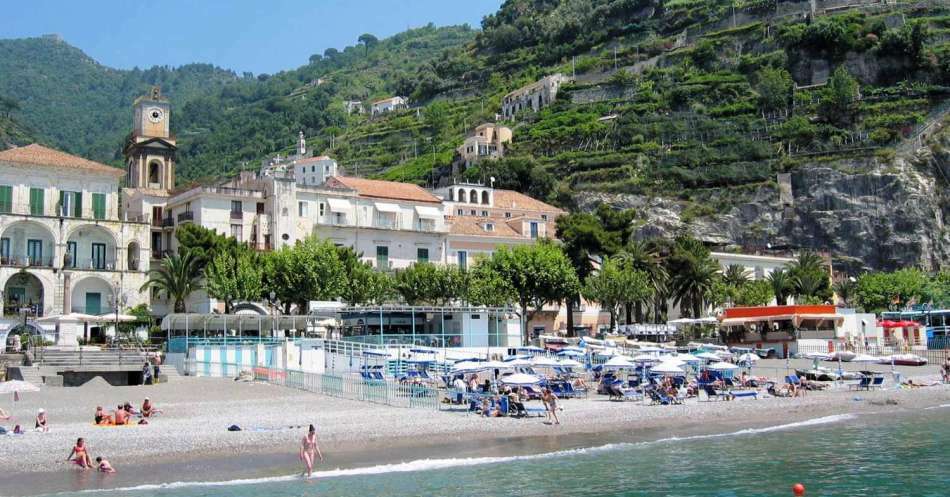 Minori, Neapolitan Riviera, Italy
Minori, Neapolitan Riviera, Italy Praiano
Prajano is considered a city, but by our standards it is more like a village - in the town there are only 4-5 streets and a couple of thousands of inhabitants.
Praiano is best suited to lovers of solitude and nature, as it is located somewhat apart from other cities of the coast.
There are not many people on holiday. Accordingly, the generally accepted options for entertainment( excursions, discos, museums) are not here.
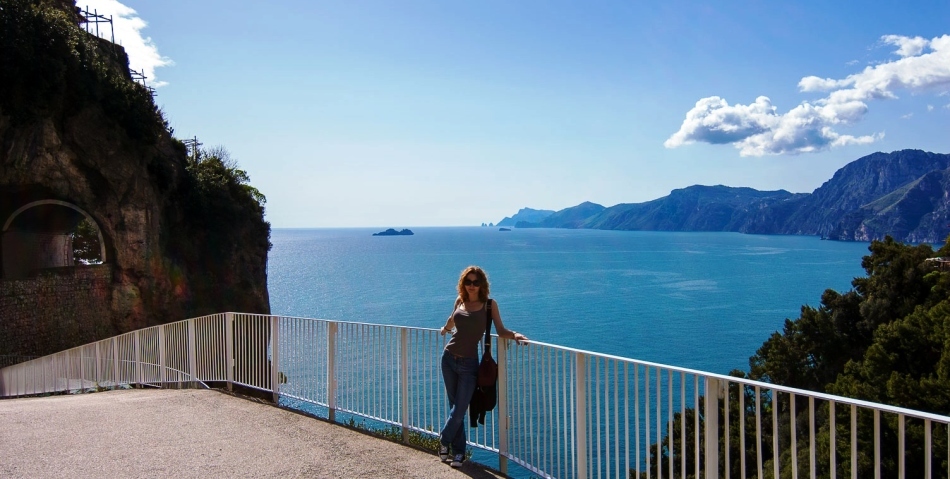 Views Praiano, Neapolitan Riviera, Italy
Views Praiano, Neapolitan Riviera, Italy But there is the atmosphere of a quiet fishing village, mesmerizing the beauty of the surrounding hills, rolling green houses and friendly locals.
In Praiano there is an equipped tiny sand and pebble beach and several platforms for swimming in the sea. There are also some pretty nice cafes and restaurants for evening gatherings with a glass of limoncello( traditional local lemon liqueur).And, by the way, according to many, in Praiano the most beautiful sunsets.
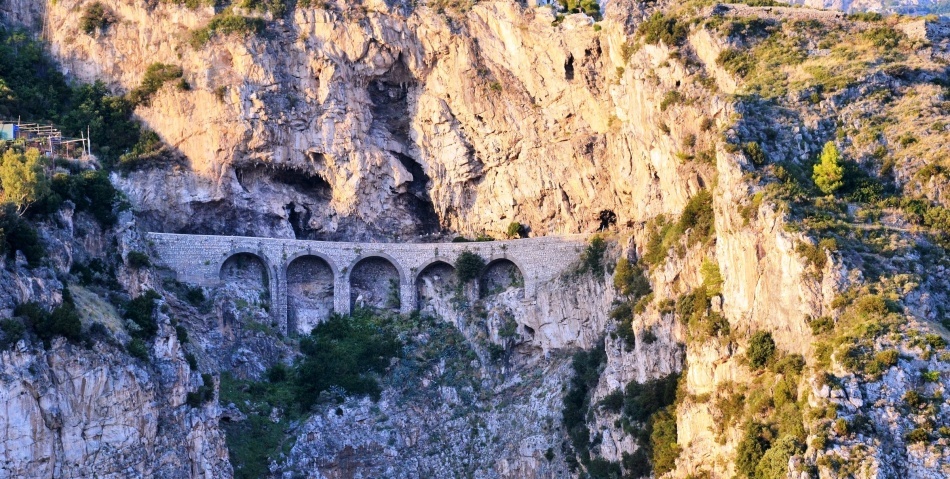 Road in Praiano, Neapolitan Riviera, Italy
Road in Praiano, Neapolitan Riviera, Italy Positano
Despite its modest size, Positano has been open for a Russian tourist for a long time. During the time of tsarist Russia, many of our compatriots used to come here.
During the Soviet era, for obvious reasons, the Russians left this wonderful place for a short time, but now everything is returning to normal, and Russian speech sounds more and more often.
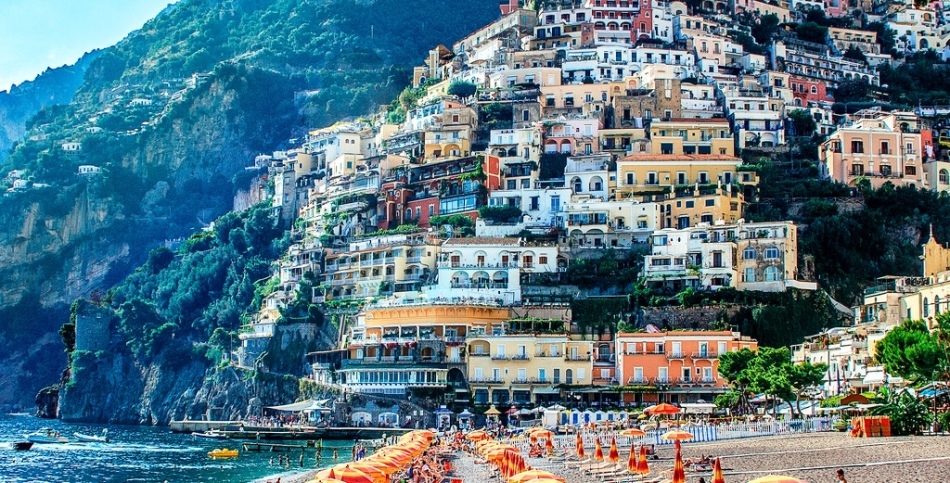 Positano, Neapolitan Riviera, Italy
Positano, Neapolitan Riviera, Italy Surprisingly, there is even a grocery store where you can buy real pickled cucumbers, lard, sauerkraut and other "Russian delicacies," which we sometimes so miss in the overseas countries.
 Street in Positano, Neapolitan Riviera, Italy
Street in Positano, Neapolitan Riviera, Italy From other cities of the Positano coast, it is distinguished first of all by the colorful multicolored house coloring, terraces descending to the sea, excellent sandy beaches( not very big, but a few) and a large selection of suites and premium villas.
In most hotels all rooms are overlooking the sea, since the city is located on steep hills, and there is simply no other kind of window here.
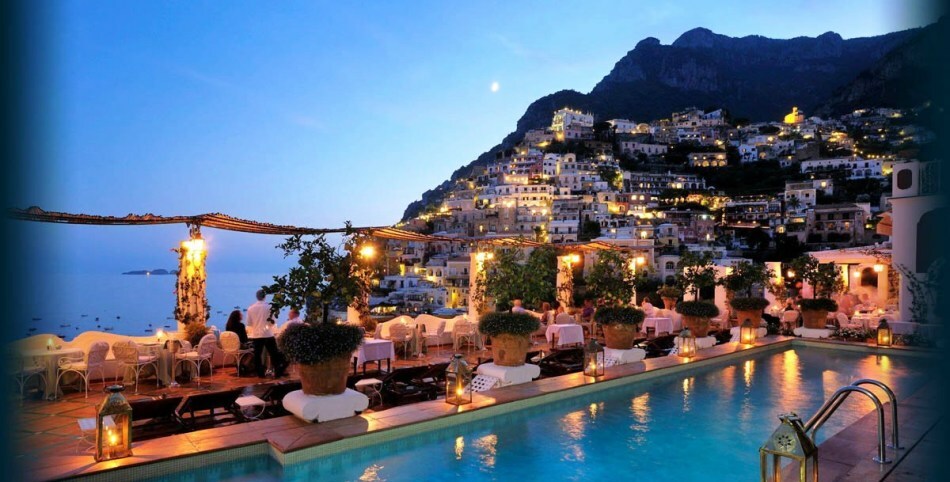 Night Positano, Neapolitan Riviera, Italy
Night Positano, Neapolitan Riviera, Italy Positano has many beautiful Baroque and Neoclassic buildings, as the city has long been chosen for rest by aristocrats. Positano is considered a prestigious and expensive resort.
Entertainment is appropriate here: horse riding, yachting, kiting, expensive restaurants and so on. The city often hosts festivals and exhibitions of artists.
Finding cheap accommodation in Positano is almost impossible, but even if you stayed in another town, find a few hours to visit this amazing place. Believe me, the Positano species will decorate any traveler's photo album.
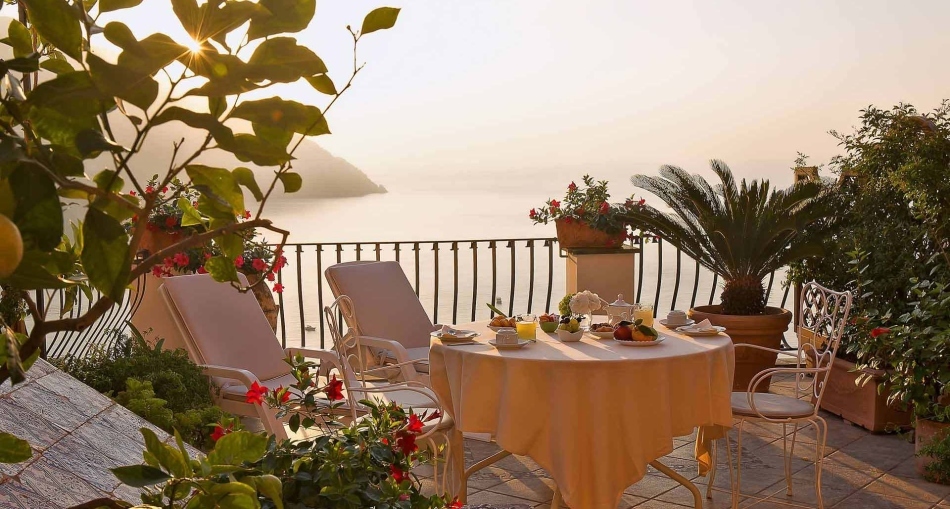 Morning in Positano, Neapolitan Riviera, Italy
Morning in Positano, Neapolitan Riviera, Italy Chetara
Chetara is a former fishing village( although the locals are still engaged in fishing), a quiet cozy town on the very south of the Neapolitan Riviera. Thanks to this, the summer season in Chetar lasts a little longer than at other resorts of the coast.
It is believed that there are the best seafood on the entire coast, besides the city is located very close to Salerno, so the cafes and restaurants of Chetar at any time of year are full of visitors from among the local.
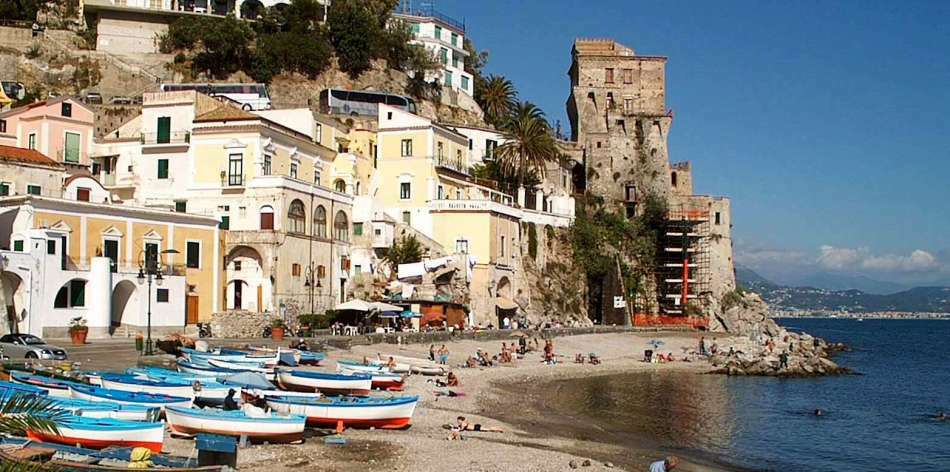 Cetara, Amalfi Coast of Italy
Cetara, Amalfi Coast of Italy Inhabitants of the surrounding cities love to spend their wedding in Chetare: the kitchen is at an altitude, the prices are acceptable, so it is possible to arrange a banquet for numerous Italian relatives( by the way, Italian weddings are a very colorful and curious spectacle, especially infinals).
Also in Chetana very beautiful coast, here almost from any point it is possible to take advantageous foreshortening and make stunning photos against the background of the sea and local landscapes.
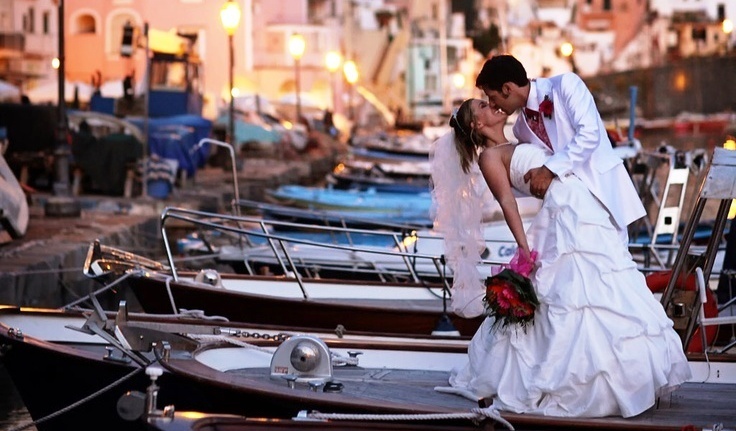 Wedding photo session in Chetare, Amalfi Coast of Italy
Wedding photo session in Chetare, Amalfi Coast of Italy Therefore, the Italian newlyweds are very fond of arranging wedding photosession in Chetar. Chetar is suitable for recreation of any category of tourists.
On the one hand, it is quiet and not crowded, but quite near the huge city of Salerno with all kinds of entertainment and excursions. The prices here do not bite, and the quality of services at an altitude - it's not for nothing that Chetaru is so popular with locals.
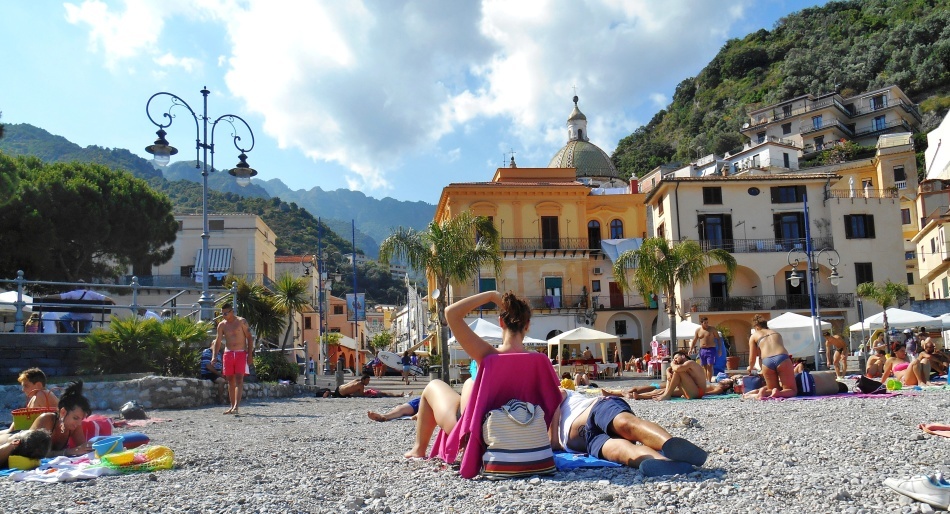
In the main cathedral of Chetara, the church of the Apostle Peter, you can listen to the mesmerizing organ music. The locals do not look very much like the image of Italians, noisy, emotional and windy southerners, promoted in our cinema.
The inhabitants of Chetare are quiet and full of dignity, working people who know their business perfectly. Hand in hand, Chetara is the best city in the Neapolitan Riviera.
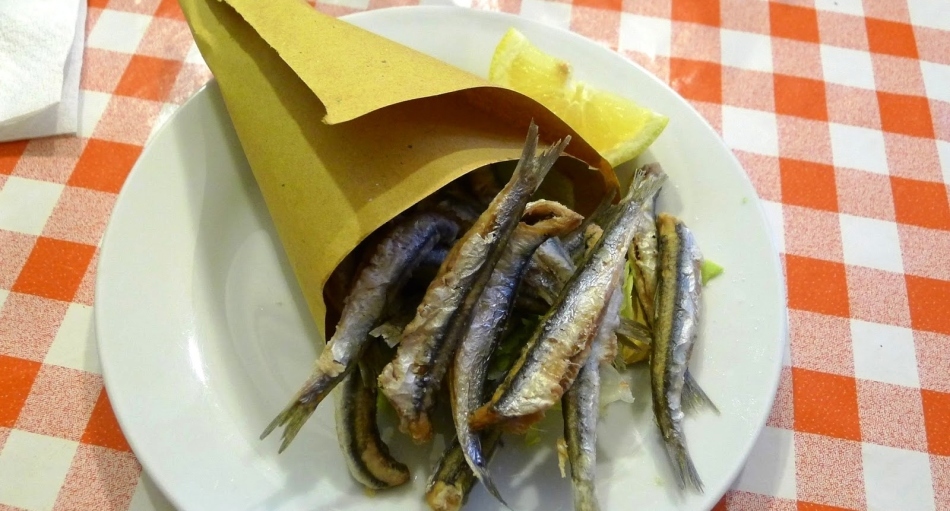 A typical dish in Chetar is roasted anchovies with lemon. Amalfi Coast of Italy.
A typical dish in Chetar is roasted anchovies with lemon. Amalfi Coast of Italy. Paestum
Actually, Paestum itself is an ancient antique city, which now in the form of picturesque ruins is the main local sightseeing facility.
Numerous hotels and villas are located in several villages around the ruins, and for convenience they are all combined in tourist guides under the same name - Paestum.
Thanks to the remains of the ancient settlement of Paestum, it is popular first of all for lovers of excursions and historical sights.
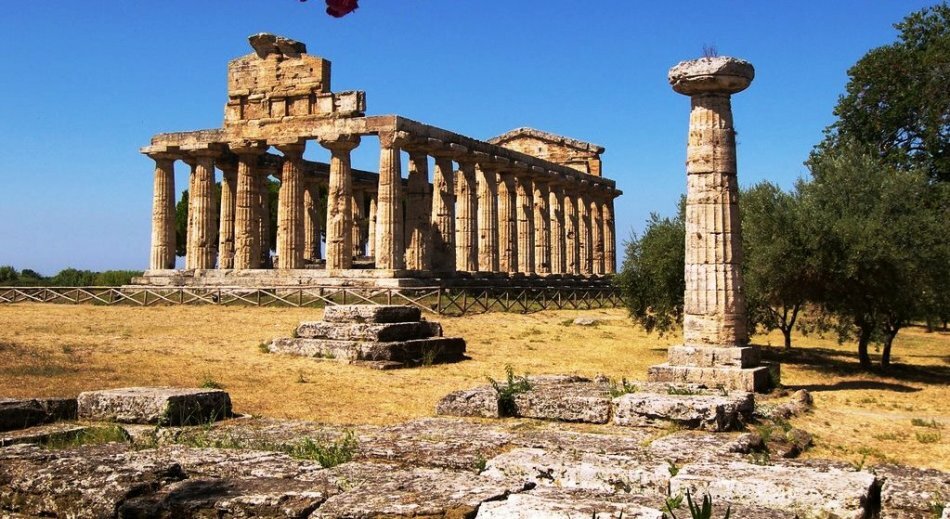 Paestum, the Neapolitan Riviera, Italy.
Paestum, the Neapolitan Riviera, Italy. In addition to the ruins Paestum can offer tourists a well-developed infrastructure with modern entertainment for every taste.
Paestum has beautiful beaches, the coast here is less rocky than elsewhere in the Neapolitan Riviera. Also in Paestum there is a small railway station, which significantly reduces the time for the journey from the airport to the hotel.
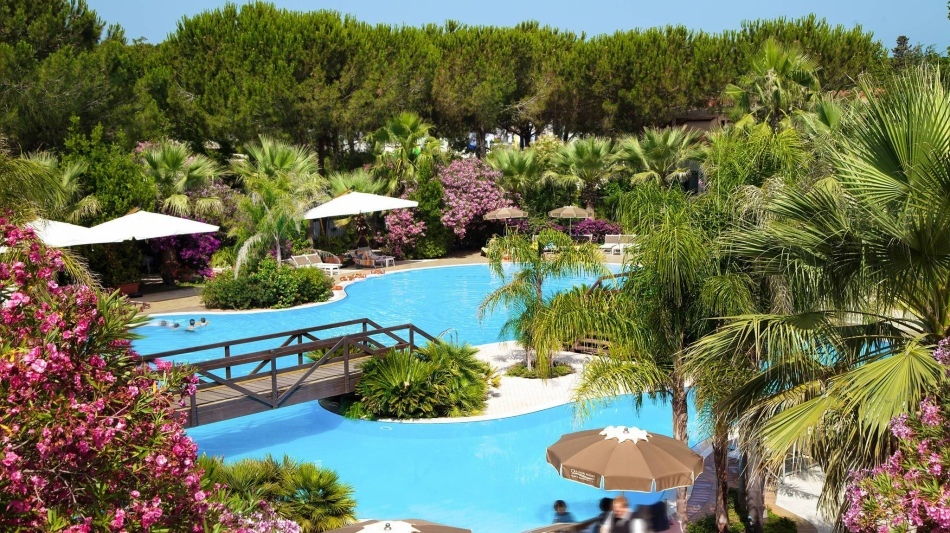 Hotel OLEANDRI RESORT PAESTUM 4 * in Paestum. Neapolitan Riviera, Italy.
Hotel OLEANDRI RESORT PAESTUM 4 * in Paestum. Neapolitan Riviera, Italy. Ravello
Ravello is another pearl of the Neapolitan Riviera. It can rightly be considered a city of artists and painters.
The beauty of Ravello's landscapes attracts artists from all over the world. In the evenings, they display their works in large numbers along the embankment, so the evening walk to Ravello is more like a visit to an art gallery in the open air.
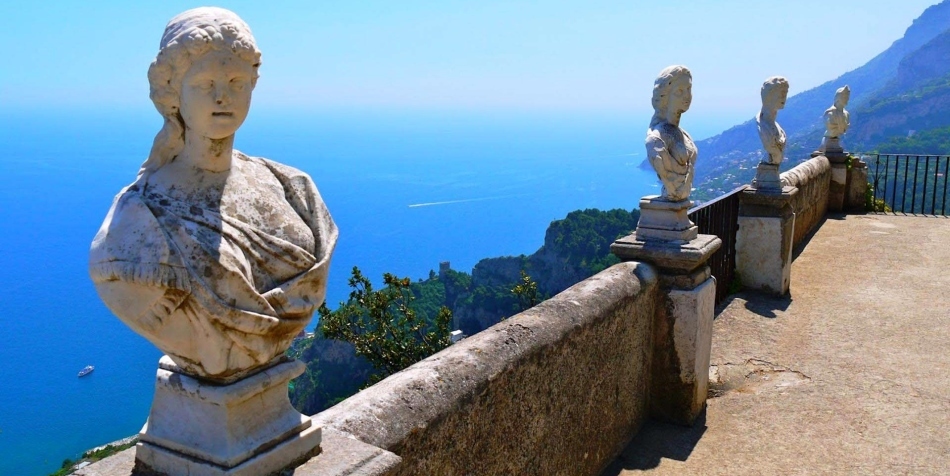 Ravello, Neapolitan Riviera, Italy
Ravello, Neapolitan Riviera, Italy Also in Ravello there are a lot of street musicians of all kinds. The city is really permeated with the atmosphere of beauty and art.
The impression is reinforced by ancient cobbled streets and magnificent buildings, in which the architecture can trace the whole history of Ravello from Byzantine times to the late Middle Ages. Every year in Ravello there is a music festival named after Wagner.
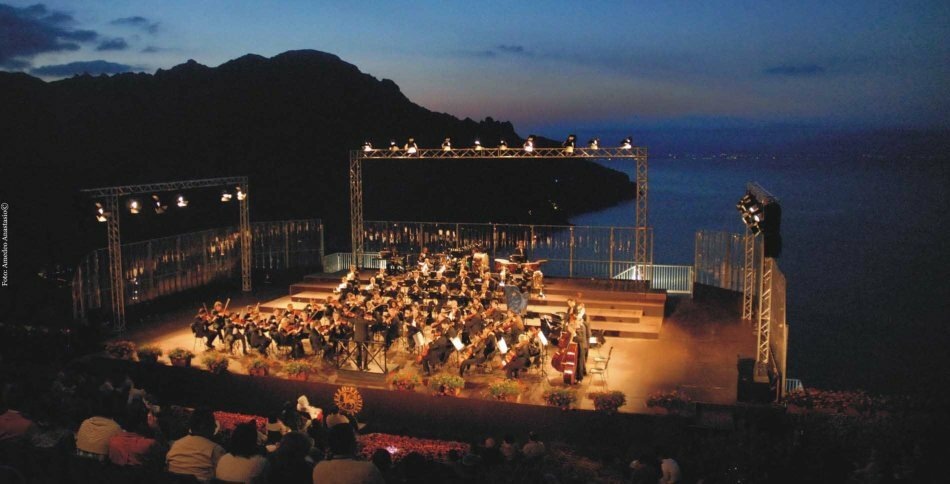 The site of the music festival in Ravello. Neapolitan Riviera, Italy
The site of the music festival in Ravello. Neapolitan Riviera, Italy Ravello and now adore the famous representatives of the world of art, many of the world's most famous artists, musicians and filmmakers acquire private villas or rent accommodation for the summer.
Ravello is considered the cultural capital of the entire region of Campania, to which the Neapolitan Riviera belongs.
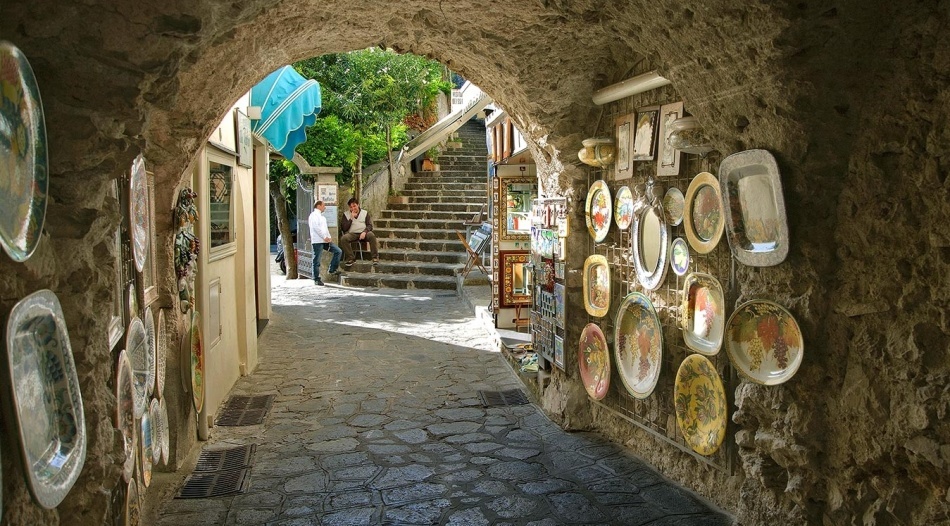 Ravello, Neapolitan Riviera, Italy
Ravello, Neapolitan Riviera, Italy Sorrento - bohemian place
Sorrento is a unique city in everything from the location. It is located on a natural natural rock terrace, at an altitude of several tens of meters above sea level. Like Ravello, he is very popular with the creative intelligentsia of all stripes.
 Sorrento, Neapolitan Riviera, Italy
Sorrento, Neapolitan Riviera, Italy It is here that you can meet classical artists in berets and with a casually thrown scarf on your shoulders, or funny characters who, in a fit of inspiration, can loudly purloise something to themselves under the nose.
In the tourist environment, Sorrento is considered a bohemian city, although there are budget options for recreation here.
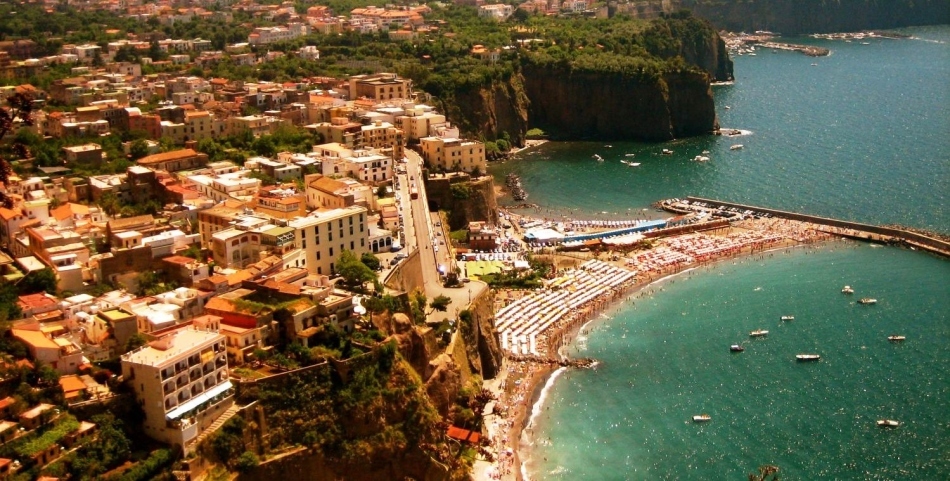 Sorrento, Neapolitan Riviera, Italy
Sorrento, Neapolitan Riviera, Italy In the high tourist season, Sorrento is flooded with crowds of holidaymakers, making it looks like a large anthill, a kind of Babylon, in which representatives of different cultures and social classes are closely intertwined.
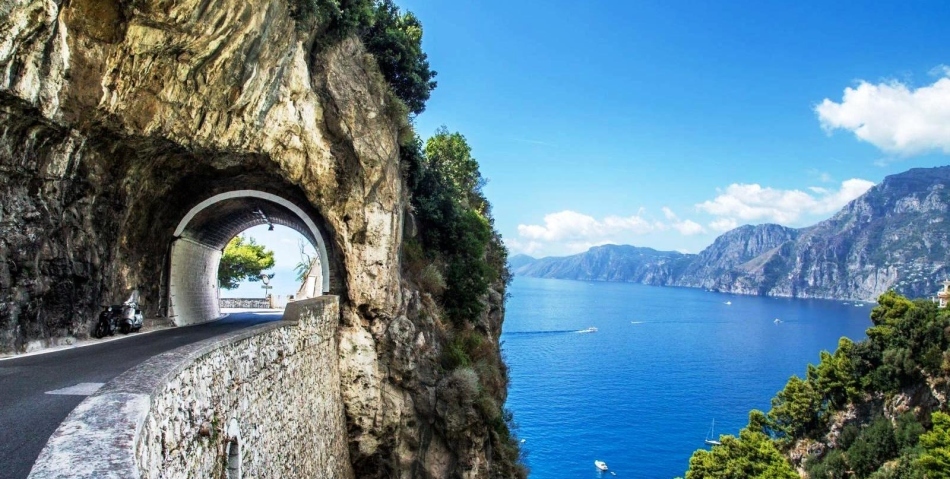 Landscape in the outskirts of Sorrento, Neapolitan Riviera, Italy
Landscape in the outskirts of Sorrento, Neapolitan Riviera, Italy Almost from any point in Sorrento, a unique view of Mount Vesuvius, which destroyed ancient Pompeii, opens. You can even take a short walk on a yacht or catamaran to get a little closer to the volcano and imagine the power of this giant, who buried the whole coast in ancient times.
Thanks to its rich and ancient history, Sorrento has preserved many ancient buildings of different architectural styles and eras.
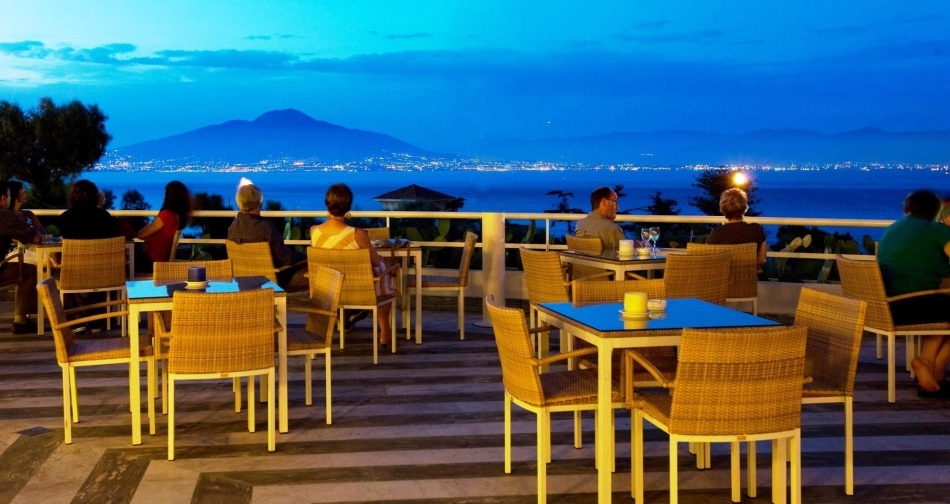 View of Vesuvius, Sorrento Italy
View of Vesuvius, Sorrento Italy Sorrento is a very colorful city. And very romantic. True, thanks to the rocky shores and the formidable contours of Vesuvius on the horizon, Sorrento's romance is not tearful, but pathetic-solemn.
Not for nothing Sorrento was so loved by rebels and revolutionaries of all stripes: Goethe, Gorky, Byron, Nietzsche. In addition to the diverse museums of history and painting in Sorrento, there is a unique museum with a large number of works by the great Salvador Dali.
 Street artist in Sorrento, Neapolitan Riviera, Italy
Street artist in Sorrento, Neapolitan Riviera, Italy Salerno and its surroundings
Salerno is an explosive mixture of magnificent nature, culture and history. This is the second most important city in the region of Campania and the final destination for everyone who chooses to relax Amalfi Coast: it is from here that it is most convenient to reach small towns in the south of the Neapolitan Riviera.
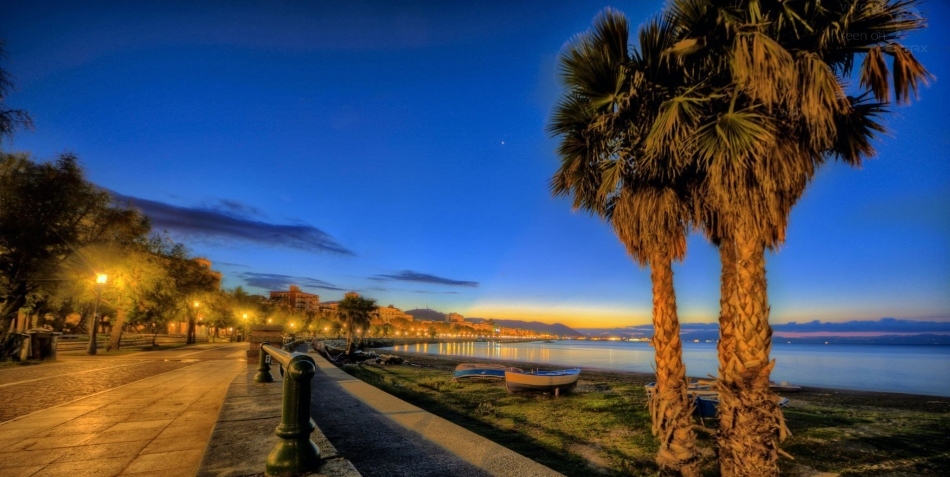 Embankment in Salerno, Italy
Embankment in Salerno, Italy The old neighborhoods of Salerno are a classic example of a medieval Italian city, riddled with narrow streets lined with tubs of flowers and linen ropes.
Here you can meet typical Italian housewives, unperturbably chatting( actually screaming) with neighbors across the street.
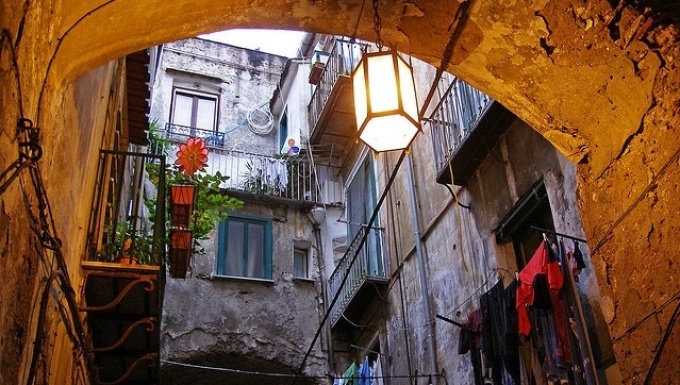 Courtyard in Old Salerno, Italy
Courtyard in Old Salerno, Italy The main cathedral of Salerno is very beautiful, which contains rare beauty sculptures on religious themes and a unique medical library from the early Middle Ages.
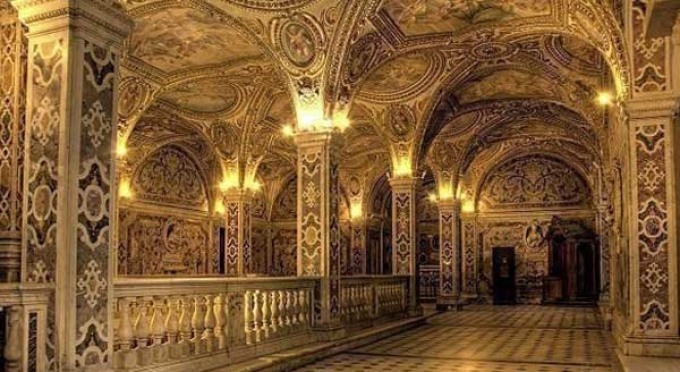 Cathedral of Salerno, Italy
Cathedral of Salerno, Italy The Fortress of Areca is a Lombard castle, towering over the city and for a long time served as a reliable protection against pirates and conquerors of different stripes.
 Fortress of Areca in Salerno, Italy
Fortress of Areca in Salerno, Italy The archaeological museum of Salerno includes the rarest finds found during excavations in the vicinity of the city, from the Iron Age, to ancient times, ending with the late Middle Ages.
Salerno Art Gallery boasts canvases of local artists, the most famous of which is Andrea Sabatini, a friend and associate of Raphael, who worked with him on many objects in the Vatican.
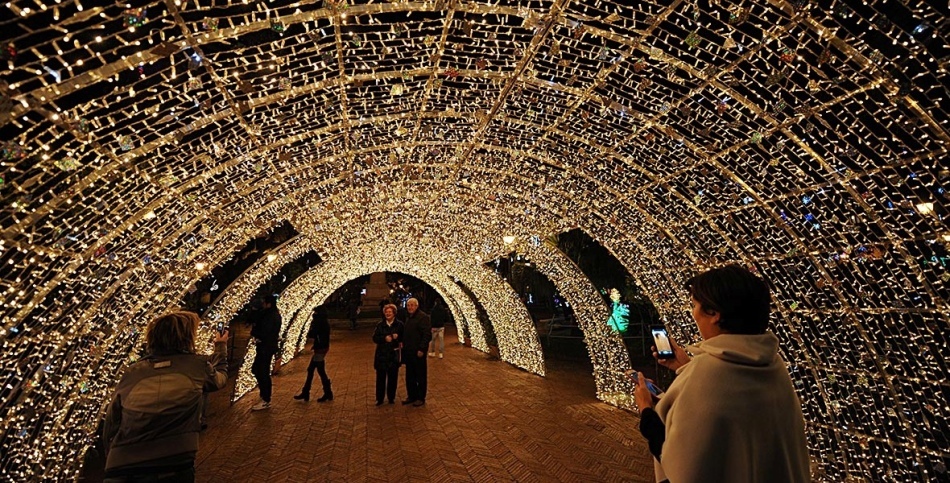 Street illumination in Salerno, Italy
Street illumination in Salerno, Italy In the surroundings of Salerno, you can find many archaeological sites of the ancient period, including the Roman bridge, which is so well preserved that it is now used for its intended purpose.
In different parts of the city you can also see here and there fragments of ancient buildings preserved to this day, as Salerno was laid as a settlement back in the days of the Etruscans.
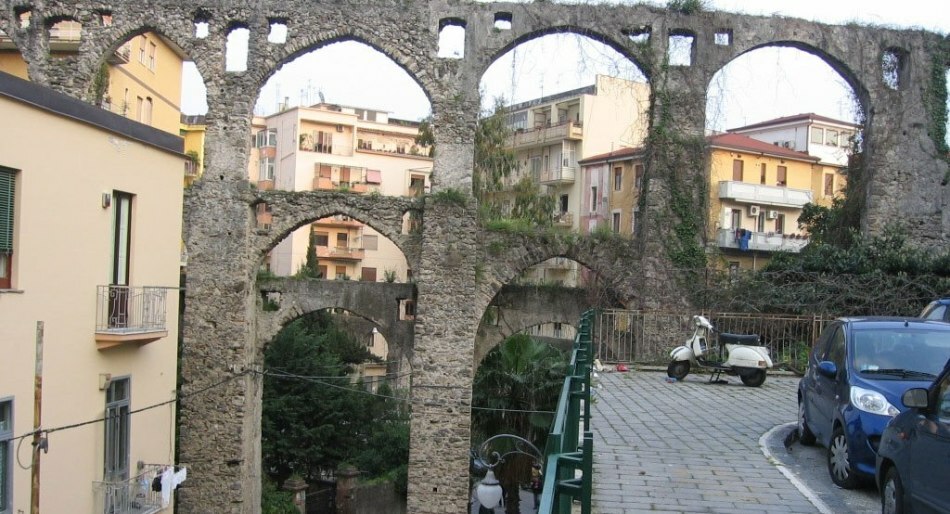 Ancient Roman aqueduct in the center of Salerno, Italy
Ancient Roman aqueduct in the center of Salerno, Italy Fort Carnale is an ancient medieval fortress and a magnificent viewing platform for panoramic views of the city.
The walls of Karnale Fort still keep traces of artillery pieces from different eras, including World War II.
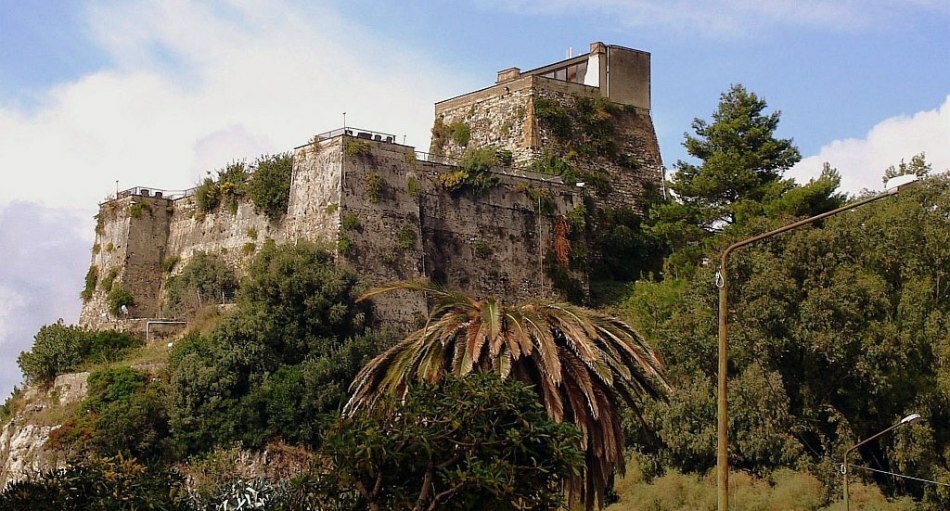 Fort Carnale in Salerno, Italy
Fort Carnale in Salerno, Italy Terme Contoursi is a natural thermal resort in the vicinity of Salerno, very popular with visitors and locals for the extraordinary healing power of the local waters.
 Terme Contoursi, Salerno, Italy
Terme Contoursi, Salerno, Italy In the vicinity of Salerno there are many developed tourist routes for lovers of long hiking. Local mountains are cut by excursion paths.
The main reason to go on such a trip is the breathtaking mountain landscapes and original tiny villages scattered on mountain slopes in the most unexpected places.
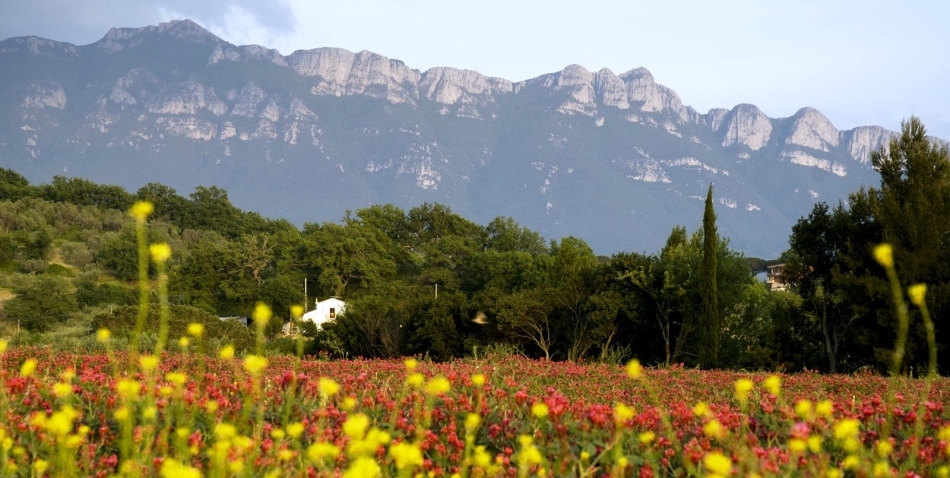 Monti Albuerni in the vicinity of Salerno, Italy
Monti Albuerni in the vicinity of Salerno, Italy Naples and its attractions
Naples is one of Italy's most famous cities, which is completely unlike any other city in the country.
Naples closely intertwined poverty and luxury, terrible dirt and glamorous chic, a great cultural heritage and a true courtyard punks with a pronounced criminal raid.
Italians themselves say that if someone wants to see all the beauty and disappointment of life, he needs to go to Naples.
 Street art in Naples street, Italy
Street art in Naples street, Italy Castle Castel Nuovo is a symbol of Naples, the castle has long served as the residence of kings, therefore, besides exterior beauty and grandeur, the castle is very interesting and interior interiors.
 Castel Nuovo Castle in Naples, Italy
Castel Nuovo Castle in Naples, Italy People's Assembly Square( Piazza Plebicito) is the main square in Naples, surrounded by historical and administrative buildings, the most grandiose of which is the church of St. Francis. Piazza Plebicito is a favorite meeting place for city dwellers.
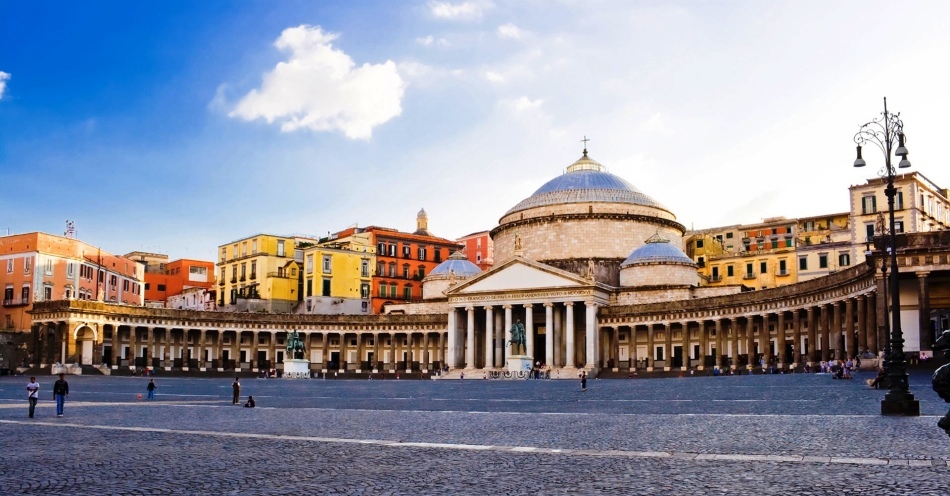 Piazza Plebicito, Naples, Italy
Piazza Plebicito, Naples, Italy The Royal Palace of Naples , in addition to the royal interiors, can attract you by an exhibition of famous painters and the library of Herculaneum, an ancient city that died during the eruption of Vesuvius along with Pompeii.
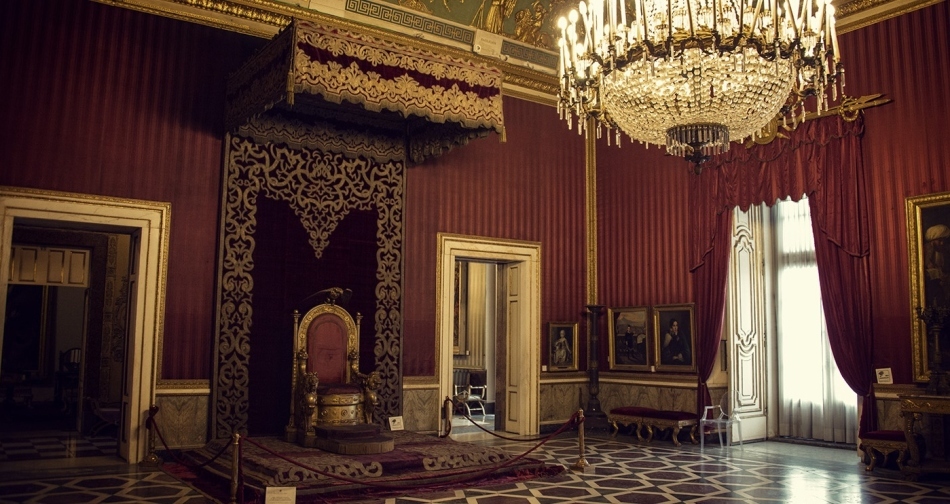 Interiors of the Royal Palace in Naples, Italy
Interiors of the Royal Palace in Naples, Italy The Royal Palace is also famous for the sculptures of horse handlers made by the Russian sculptor Klodt, similar to those on the Anichkov Bridge in St. Petersburg.
Sculptures were solemnly donated to Naples by the Russian Emperor Nicholas I in gratitude for the wonderful welcome during his trip to Italy.
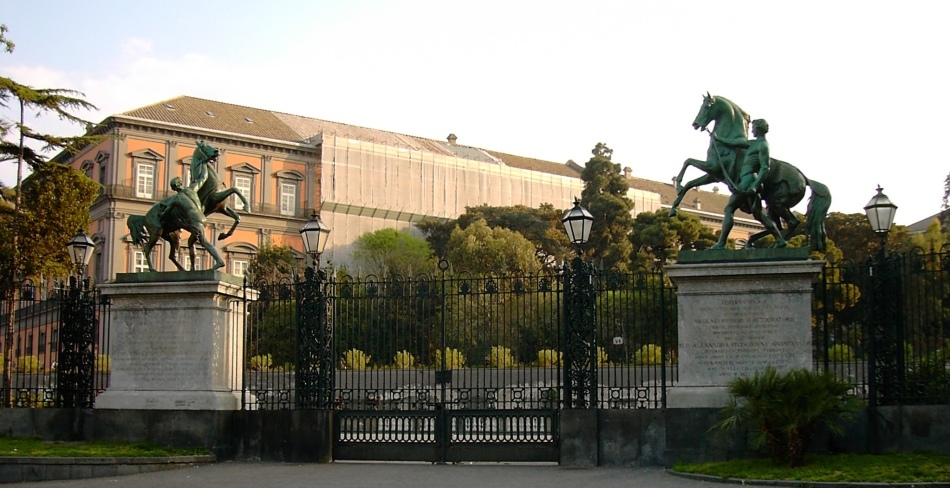 Sculptures by Klodt at the gates of the Royal Palace in Naples, Italy
Sculptures by Klodt at the gates of the Royal Palace in Naples, Italy The National Archaeological Museum of Naples is considered one of the oldest and most interesting archaeological museums in Italy. The museum exposition includes samples of various historical epochs, found during excavations in this region.
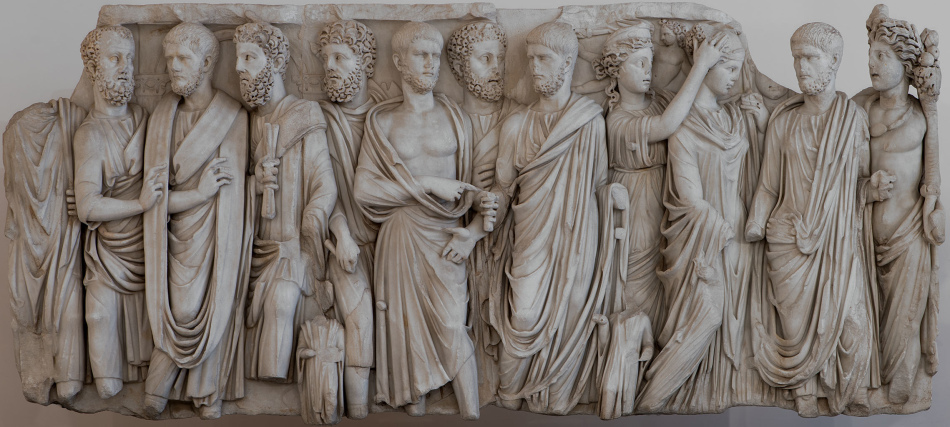 The Sarcophagus at the Archaeological Museum of Naples, Italy
The Sarcophagus at the Archaeological Museum of Naples, Italy The Cathedral of the Holy Januarius is one of the places of pilgrimage for Catholics from all over Europe. It is here that the relics and blood of Saint Januarius, the patron saint of the city of Naples, are stored.
It is believed that every year on the day of the execution of Januarius( he was executed by one of the Roman emperors during the persecution of Christians) his blood, which is a dried out clot, "comes alive", becomes scarlet and liquid.
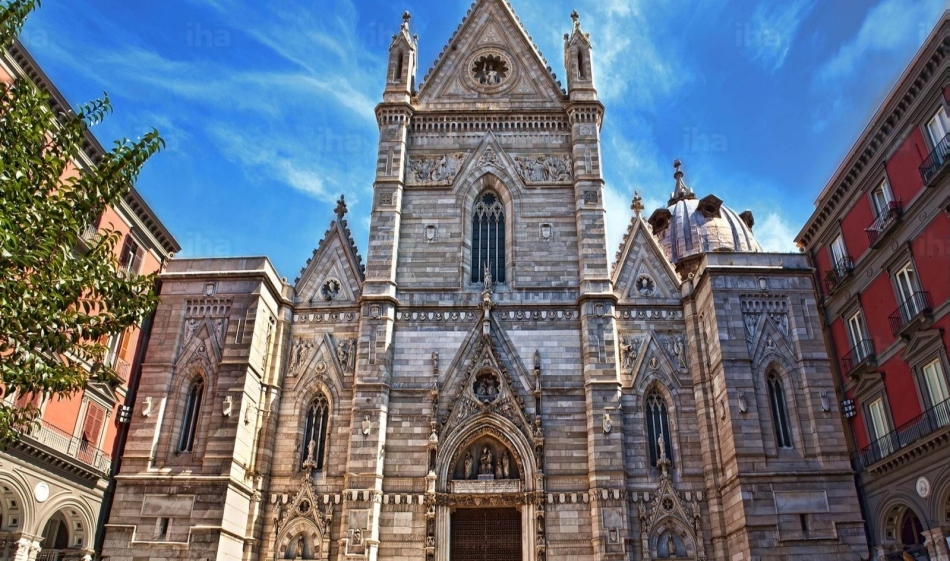 St. Nanuary Cathedral, Naples, Italy
St. Nanuary Cathedral, Naples, Italy If the blood is alive, the year will be favorable. If the miracle does not happen, the city is in for a lot of shocks and troubles. Each year the Neapolitans fanatically come to the cathedral, to learn from the lips of the local priest whether the blood has come alive and what to expect from the coming year.
At the cathedral a small museum is opened, in which various objects and decorations dedicated to Saint Yanuarius are collected.
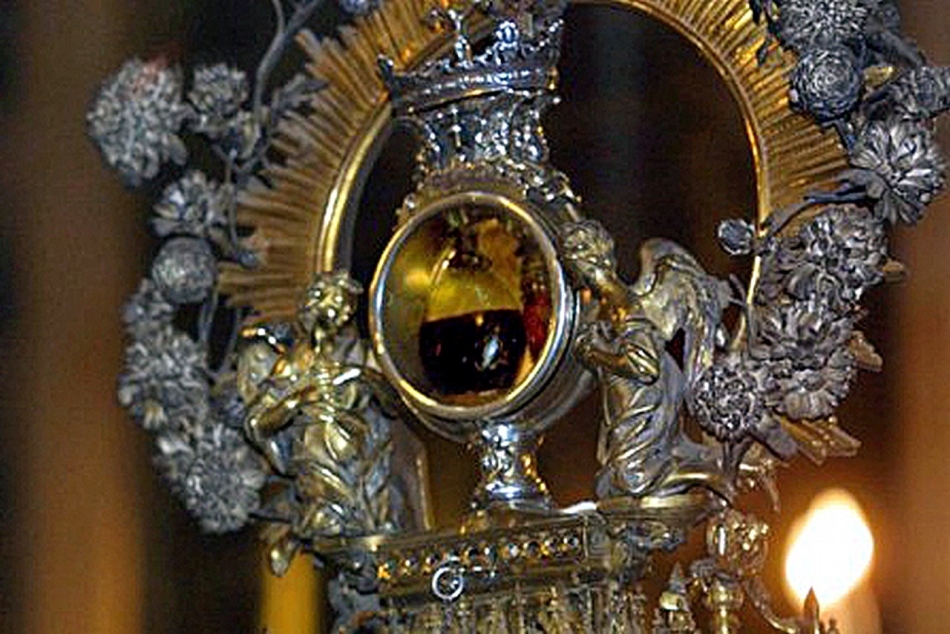 Vessel with the blood of St. Januarius, Naples, Italy
Vessel with the blood of St. Januarius, Naples, Italy The Sansevero Chapel of is interesting because it is a classic example of the tomb of the Renaissance, as well as the famous sculpture "Christ under the Shroud" on one of the graves.
The sculpture is made with such skill that, according to legend, the Creator made a real stone into stone, which was covered with a sculpture, since the hand of a mortal sculptor can not create such a masterpiece.
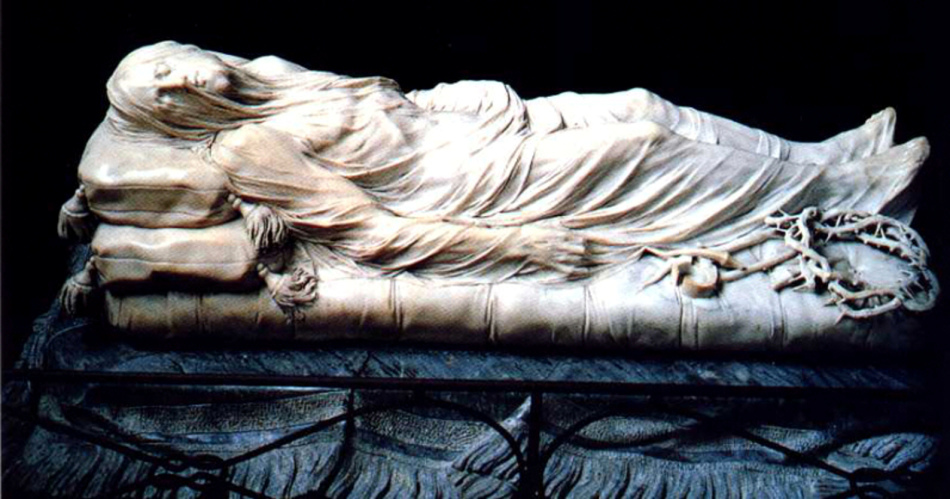 "Christ under the Shroud" in the Chapel of Sansevero, Naples, Italy
"Christ under the Shroud" in the Chapel of Sansevero, Naples, Italy The Basilica of Santa Chiara is a magnificent example of medieval architecture, the courtyard of which is decorated with unique tiles with paintings that impress even very far from the art of tourists.
Unfortunately, the modern building is a masterfully executed restoration of the original building, as the basilica was seriously damaged during the Second World War.
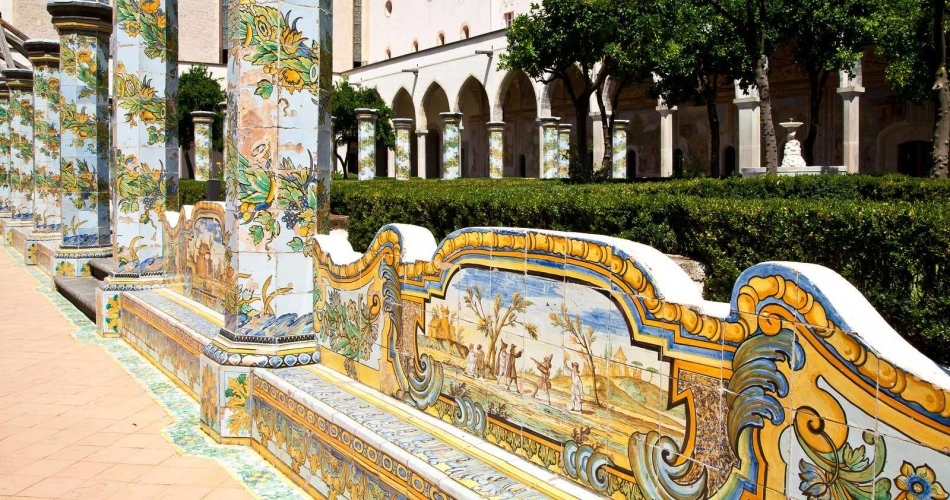 Basilica of Santa Chiara, Naples, Italy
Basilica of Santa Chiara, Naples, Italy The Kapodimonte Palace will present to your eyes the canvases of Titian, Goya, Caravaggio, Botticelli and other great Italian masters.
Also here you can see royal chambers, an exhibition of coins from different eras, a collection of fine royal porcelain. There are separate rooms with exhibits of modern art.
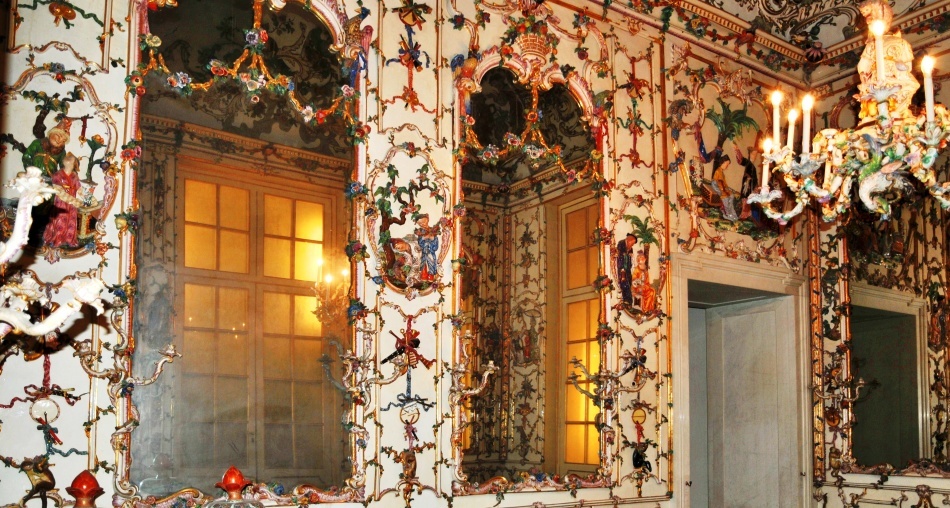 One of the halls of the palace of Capodimonte, Naples, Italy
One of the halls of the palace of Capodimonte, Naples, Italy Catacombs of Naples - a mystical and chilling soul place. It is a whole underground city with its streets, intersections and significant places. The catacombs served as a place where the first Christians escaped the persecution of the Romans.
Here they buried their dead and tormented brethren by faith. The inhabitants of Naples say that in the catacombs there are still many ghosts of innocent tortured Christians.
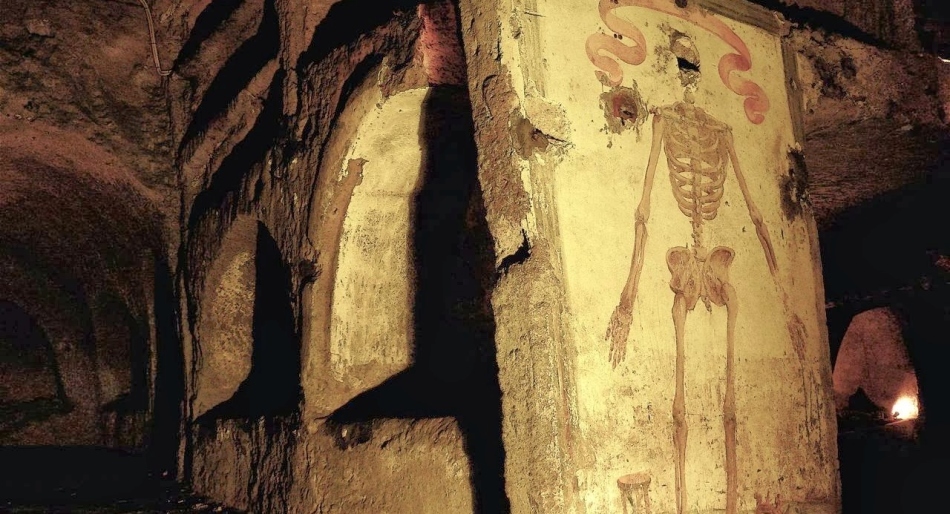 Catacombs of San Gaudioso in Naples, Italy
Catacombs of San Gaudioso in Naples, Italy Umberto I Gallery is a pompous building built in the 8th century in order to separate the aristocratic part of the city from the Neapolitan slums.
The gallery was built on the border of the districts so that the noble aristocratic families did not suffer from the sight and smell of the plebeians on the other side of the fence. Today in the gallery of Umberto I there are numerous boutiques and clothing stores.
In the center of the gallery in the form of a mosaic, all the signs of the zodiac are depicted. You can often see in this place people sitting, or even lying on their own sign. According to local belief, this brings success in any conceived business and fulfillment of desires.
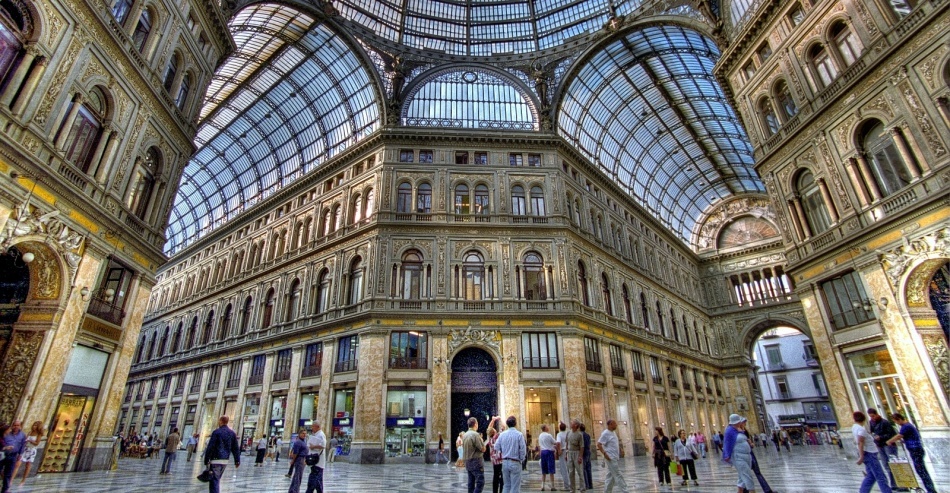 Gallery of Umberto I in Naples, Italy
Gallery of Umberto I in Naples, Italy Endalandia is an amusement park with a lot of attractions, cafes, 3D cinemas and other obligatory attributes of the modern recreation industry.
It can not be said that Endelandia somehow stands out among other parks of major European cities. Her visit will, perhaps, be interesting only to families with children as a change of scenery after numerous museums and exhibitions.
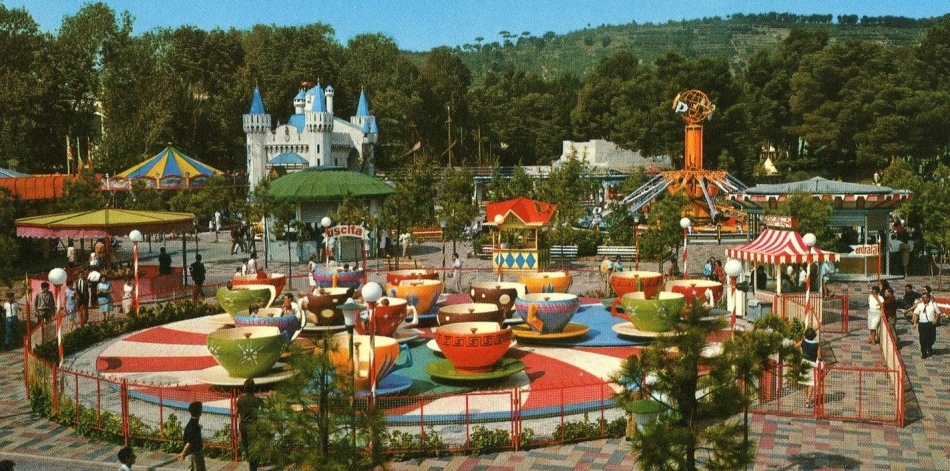 The amusement park of Endelandia in Naples, Italy
The amusement park of Endelandia in Naples, Italy Piazza Bellini is a nice square filled with restaurants, cafes and live music. The square comes alive in the evenings, filled with an atmosphere of flirting, romantic adventures and carefree chatter.
It is believed that it is here that you can meet the true love of all life, therefore visitors to Piazza Bellini are often alone and simply obsessed with the idea of dating the opposite sex.
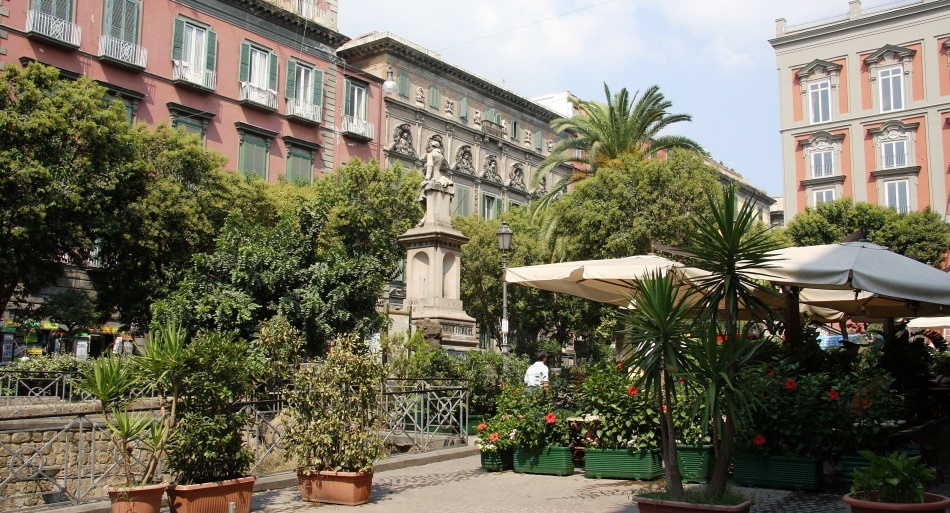 Piazza Bellini in Naples, Italy
Piazza Bellini in Naples, Italy In general, the sights of Naples can be listed endlessly. Everyone will find here a lot of interesting places, bright impressions and emotions.
Not necessarily all emotions will be positive, since Naples is a city of contrasts. But he does not leave anyone indifferent.
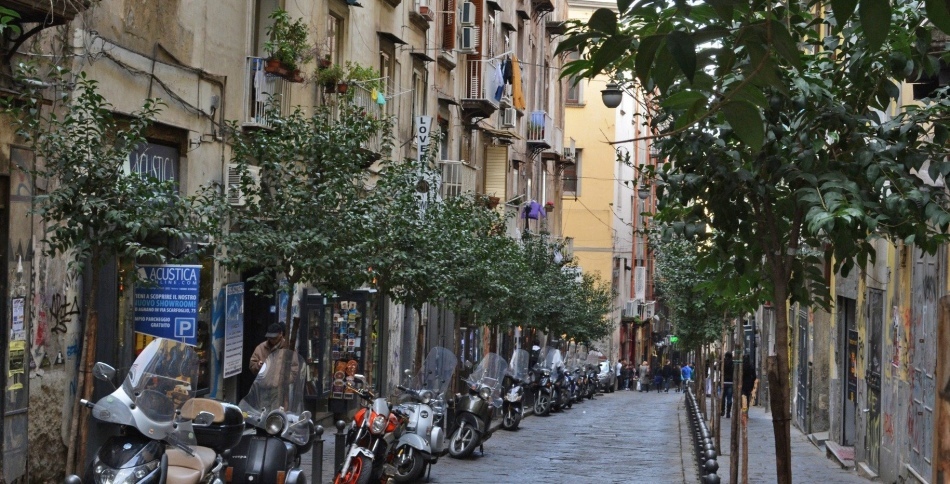 Street in Naples, Italy
Street in Naples, Italy Separately, one must also say about the security measures in Naples. In the popular tourist places is relatively quiet, except for the small pickpockets inherent in any large city of Europe, especially Italy.
Some care should be taken when visiting areas that are remote from the main tourist routes.
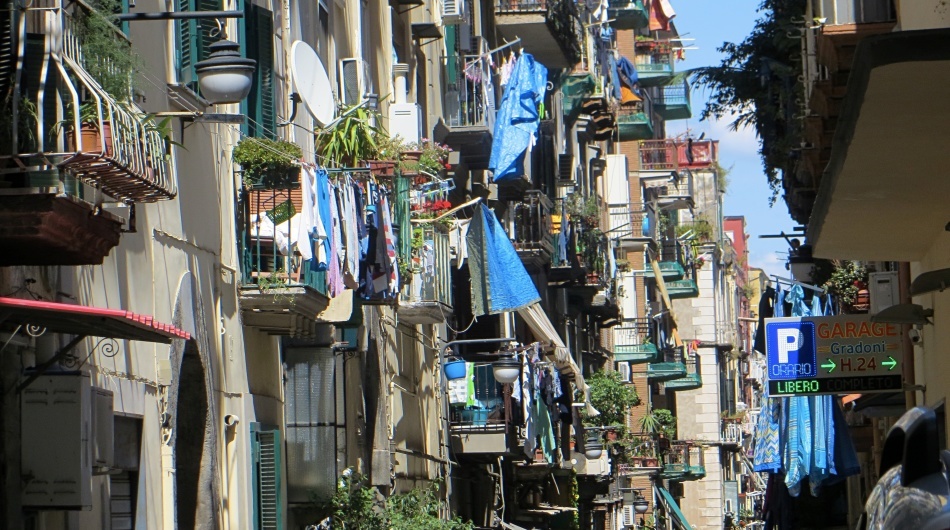 Residential neighborhoods in Naples, Italy
Residential neighborhoods in Naples, Italy Unlike many other European cities, in Naples, you should not try to independently examine the "non-tourist" places of the city. First of all, it's pretty dirty there. The sleeping quarters can be littered with fetid heaps of garbage literally with human growth.
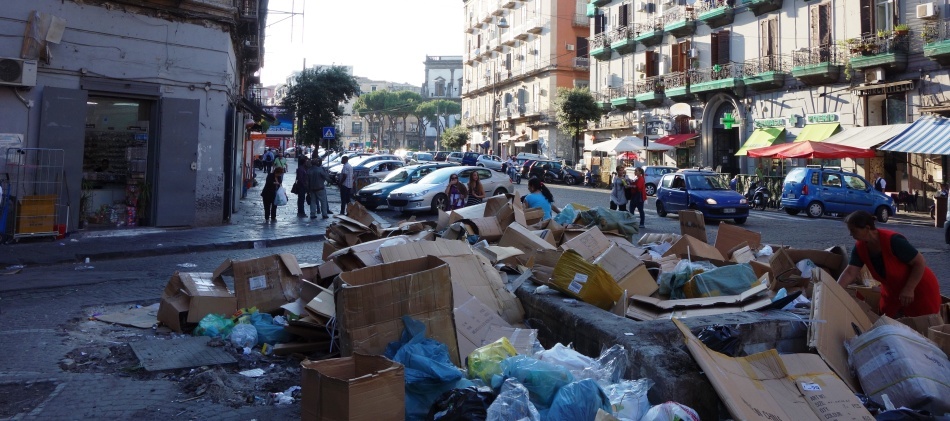 Garbage in the streets of Naples, Italy
Garbage in the streets of Naples, Italy And secondly, in the Naples camorra( the local mafia) trades with all kinds of criminal earnings, and for foreigners does not make exceptions.
Refrain from visiting such areas in the dark and do not respond to provocations of local punks, if for some reason you are noticed for some reason.
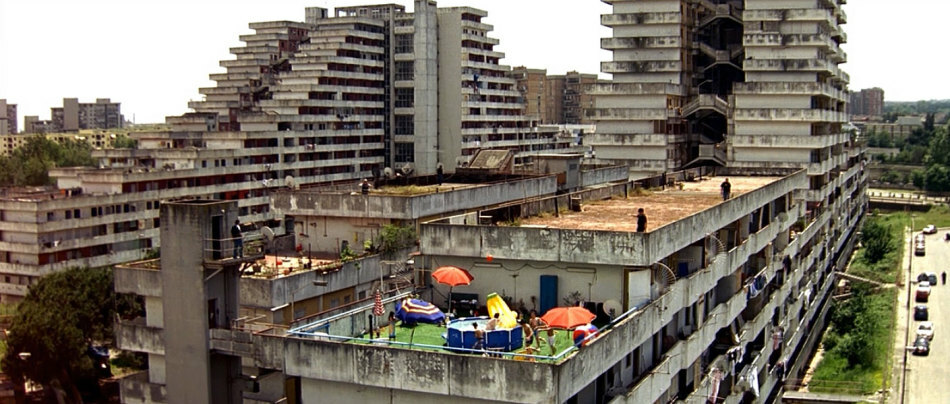 Slums of Naples, Italy
Slums of Naples, Italy Pompeii, Herculaneum and Stabia
Pompeii, Herculaneum and Stabia are three ancient Roman cities that died instantly during the terrible eruption of Vesuvius in 1079.The most famous of them is Pompeii.
Buried under volcanic rocks, the city turned out to be "preserved" for many centuries exactly as it was at the time of its death.
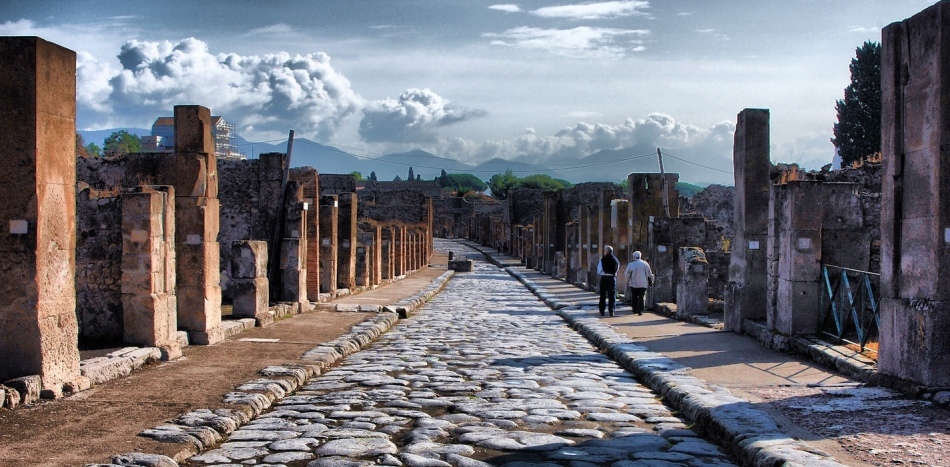 Street in Pompei, Italy
Street in Pompei, Italy Thanks to this, today you can see almost untouched by time urban buildings that have preserved not only the external outlines, but also the interior, including household items and wall murals.
By the number of artifacts found, this is perhaps the most outstanding antique museum in the open.
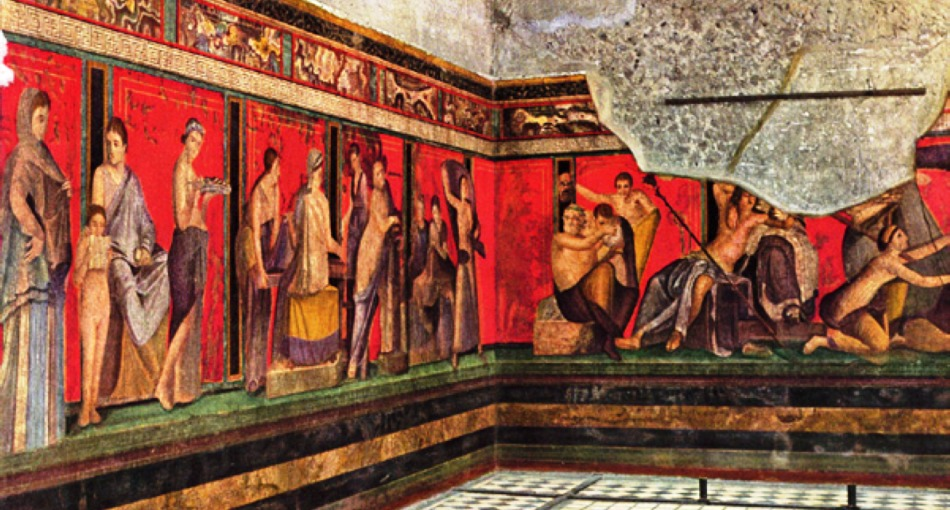 Murals on the walls of the Villa of the Mysteries, Pompeii, Italy
Murals on the walls of the Villa of the Mysteries, Pompeii, Italy I must say that Pompeii was a fairly developed and prosperous city. There are several theaters, a magnificent library, city baths, public toilets, brothels and taverns.
There were sewerage and water supply in the city, houses and streets were numbered, trade was actively conducted and production was developing.
All the streets were paved with stone, there were signs. A network of public services was developed, for example, the townspeople used laundry facilities and delivered hot meals to their homes.
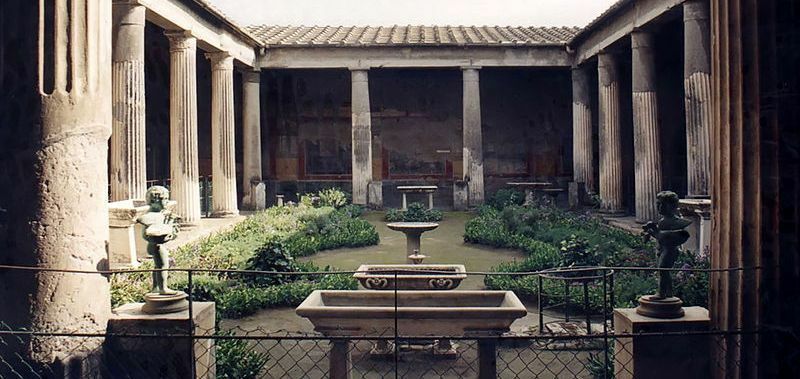 Residential house, Pompei, Italy
Residential house, Pompei, Italy Imagine the figures of people and animals that died during the eruption. Initially, archaeologists could not explain the strange emptiness, which they found in many cases during excavations, but later it was possible to establish that voids formed on the site of decaying bodies - in some of them human bones and garments were found.
In the future, the voids were gently poured with gypsum, thus obtaining the contours of the body of the deceased.
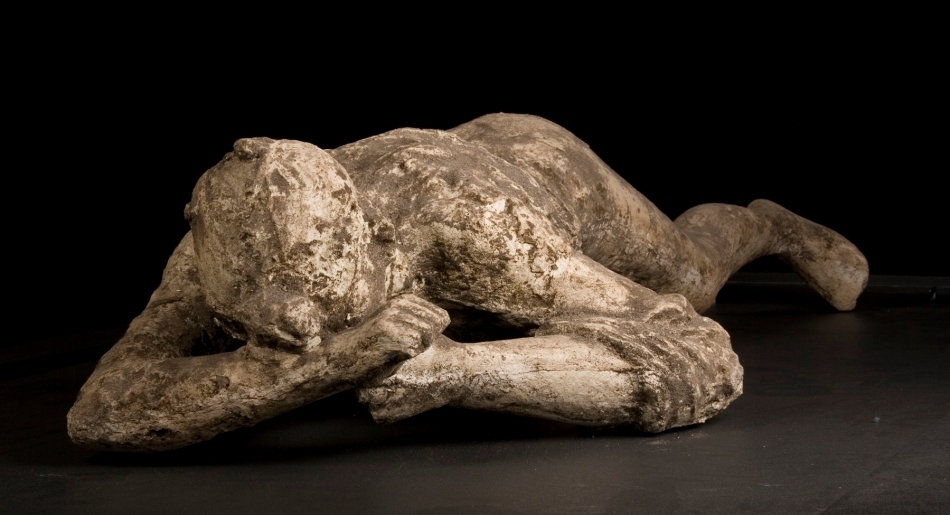 Casting of the body of the deceased inhabitant of Pompeii, Italy
Casting of the body of the deceased inhabitant of Pompeii, Italy Also during the excavations, many preserved food reserves, antique wines, decorations, libraries of townspeople and handicraft shops were found. Excavations of Pompeii are conducted till now, only part of the city is accessible for inspection.
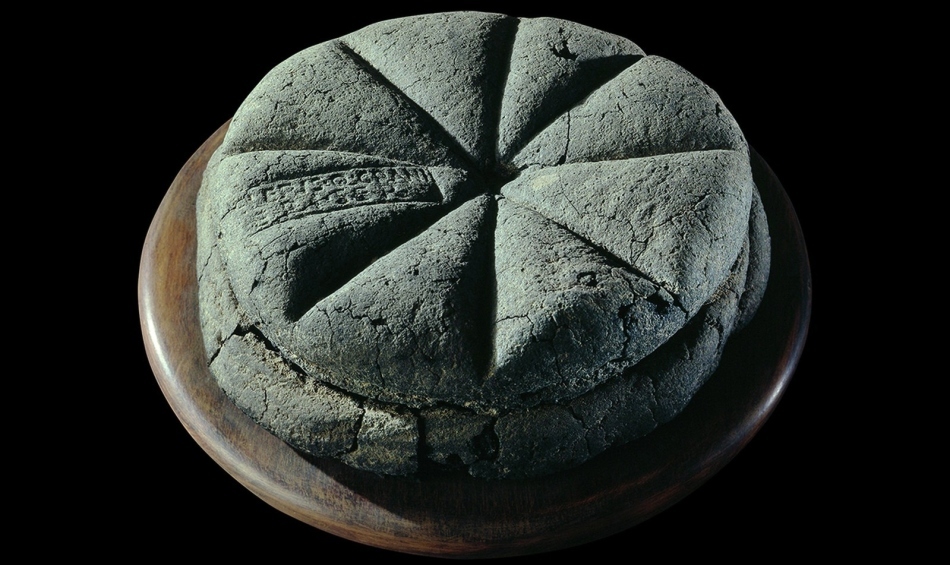 Petrified bread found during excavations in Pompeii, Italy
Petrified bread found during excavations in Pompeii, Italy You can get to Pompeii yourself. In Naples, from the central station, there is a Circumvesuviana train every 30 minutes. You need to go to the station Pompei Scavi / Villa Misteri( the journey takes about half an hour).
Further from the station to the museum is a network of pointers, which are fairly easy to navigate. In the summer, the museum is open from 9 am to 7 pm( the ticket office closes 1.5 hours earlier!).
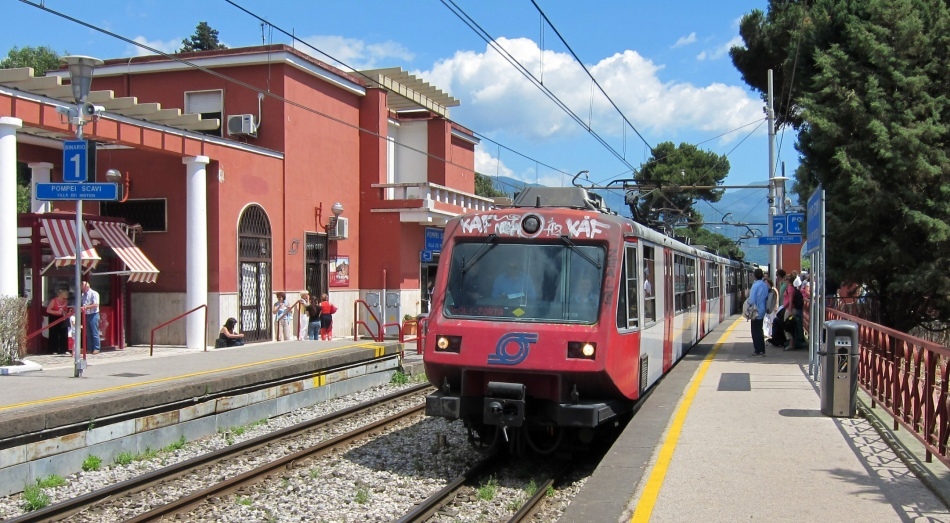 Train Circumvesuviana, Naples, Italy
Train Circumvesuviana, Naples, Italy For a leisurely inspection of the city it will take approximately 5-6 hours. The entrance ticket costs 11 euros. For a surcharge, you can purchase an audio guide or join an excursion group.
For self-inspection of Pompeii, it is better to purchase a map at the entrance to the museum, as it is easy to get lost in the city.
If you want, you can take an additional ticket for inspection of neighboring cities, Herculaneum and Stabia, also killed during the eruption of Vesuvius. Such a ticket is valid for three days, as it is simply impossible to inspect everything in one day.
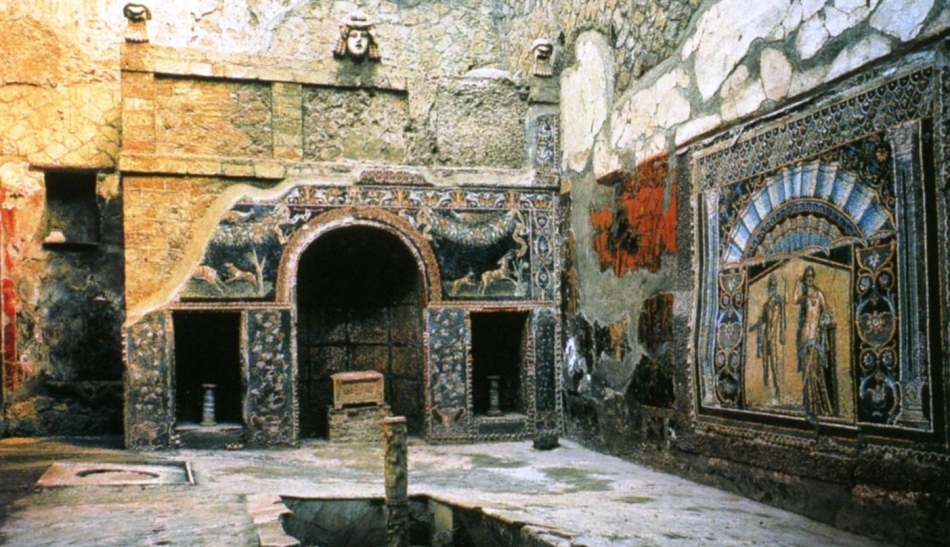 Excavations in Herculaneum, Italy
Excavations in Herculaneum, Italy Ischia Island
Regular ferries and speed boats from Naples and Sorrento go to Ischia. The journey takes from one and a half hours to 40 minutes, the ticket costs from 40 euros per person( the exact price each carrier sets independently).
If you are going to travel by Ischia by car, you should specify in advance the availability and schedule of cargo ferry at the ports of departure.
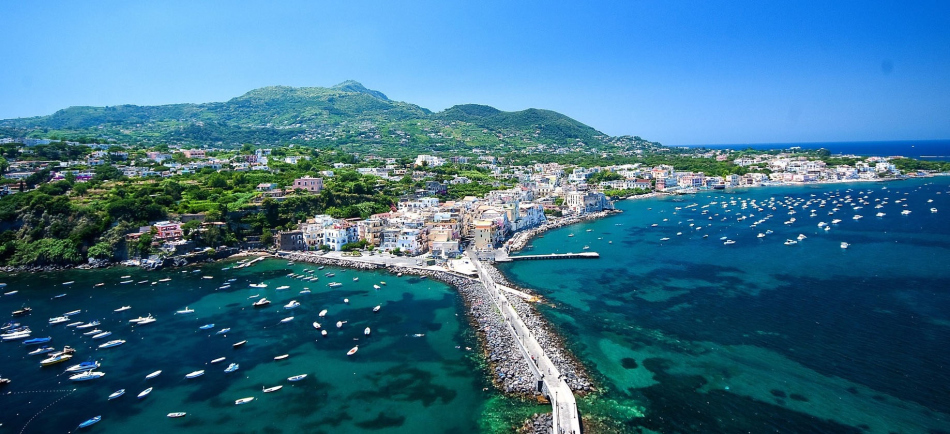 Ischia Island, Italy
Ischia Island, Italy There are not too many sights in Ischia( the fortress of the reign of Aragon, several churches, a botanical garden and an archaeological museum).
There is an eco-path for lovers of long walks, with hills that offer good views of the surrounding area.
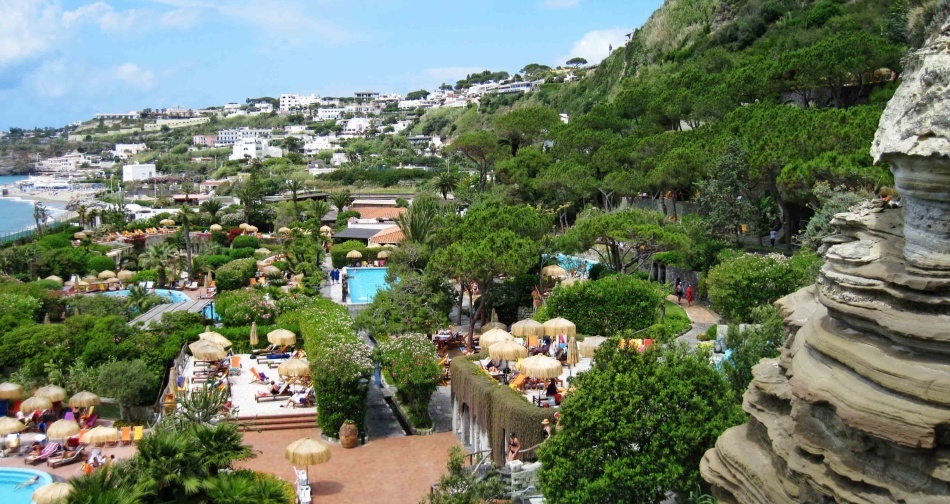 Thermal resorts on the island of Ischia, Italy
Thermal resorts on the island of Ischia, Italy Most tourists go to Ischia to improve their health in thermal springs. Rest on the island is very calm and measured.
Mostly there are resting lovers of silence, families with young children and adult couples who do not aspire to active entertainment.
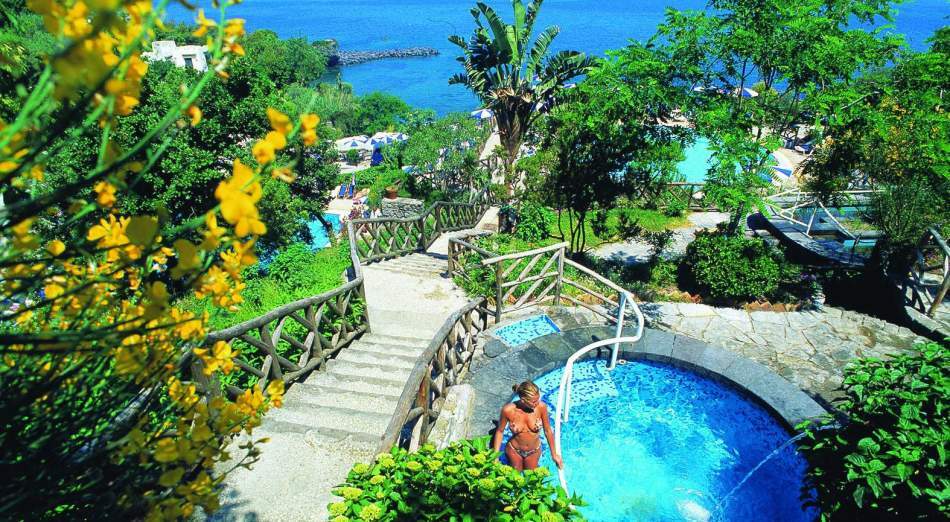 SPA Hotel on Ischia Island, Italy
SPA Hotel on Ischia Island, Italy Capri Island
Maxim Gorky, who spent on Capri most of the time said about the island: "A piece is tiny, but tasty.
In general, here at once, in one day, you see so much beautiful that you get drunk, you are bald and you can not do anything. "Perhaps this is the most accurate definition of life in Capri.
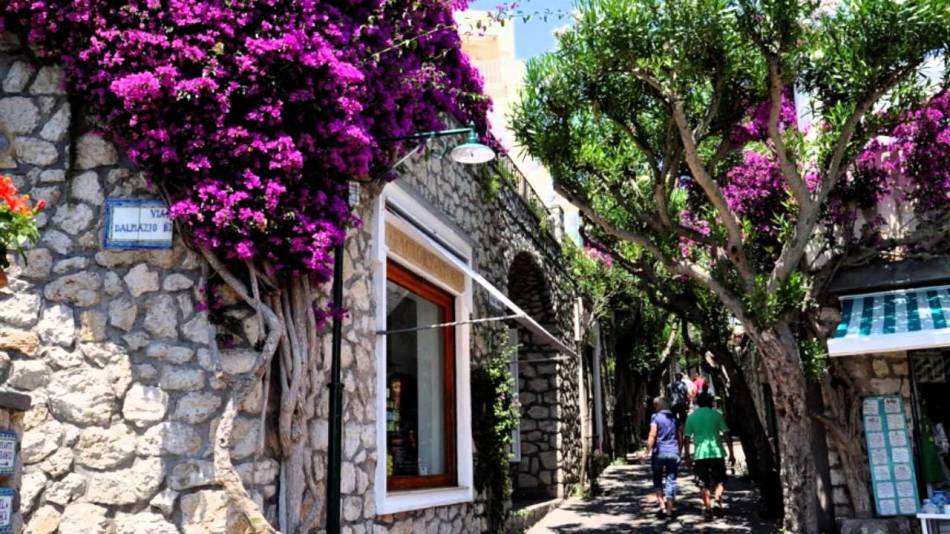 The island of Capri, Italy
The island of Capri, Italy The city of idle idleness of Capri dates back to the time of the Roman emperor Octavian Augustus, who was so impressed by the local beauties that he built a whole mini-city for his own rest.
After Octavian August followed by representatives of the Roman nobility and the next generation of emperors.
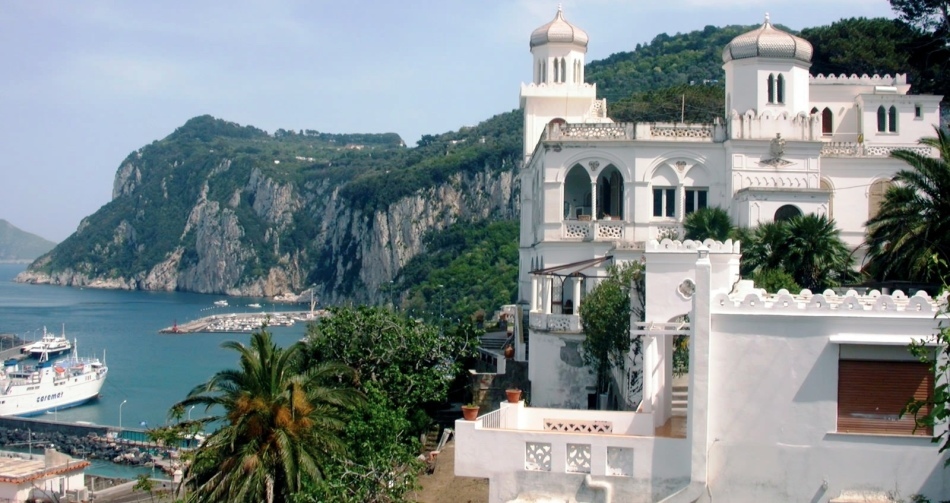 Villa on the island of Capri, Italy
Villa on the island of Capri, Italy Later the Romans were replaced by a medieval nobility, the European bourgeoisie and, finally, representatives of the bohemians of our days. At times, the density of stars per square kilometer here is just off scale. Closer and more convenient to get to Capri from Sorrento.
The fare may seem high, but this is the island's reputation - nothing can be cheap here, only glamor, glamor and carefree transtering.
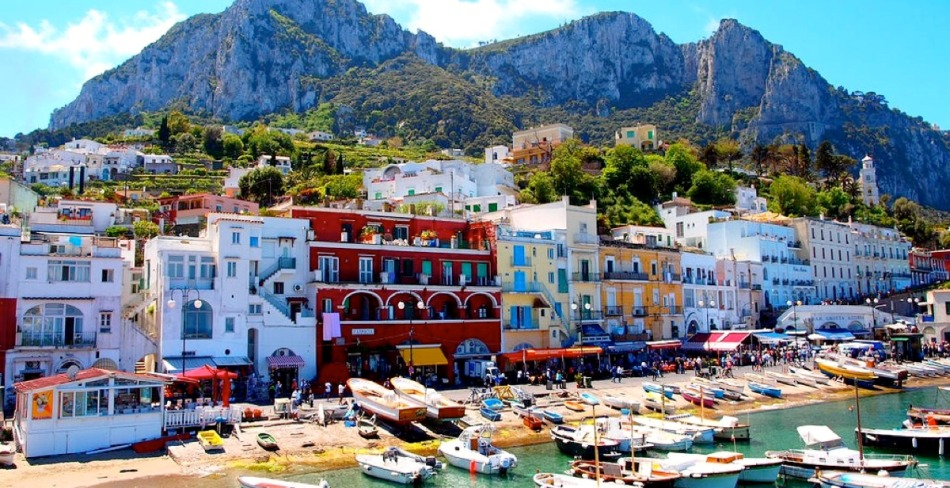 Berth on the island of Capri, Italy
Berth on the island of Capri, Italy It's worth to go to the island, despite the high cost( after all, you can definitely afford a couple of cups of coffee in local cafes).
But here on some summer terrace you can easily meet any super-media person in crumpled shorts, or just take a look at the local audience, the best definition for which is the "vanity fair".
